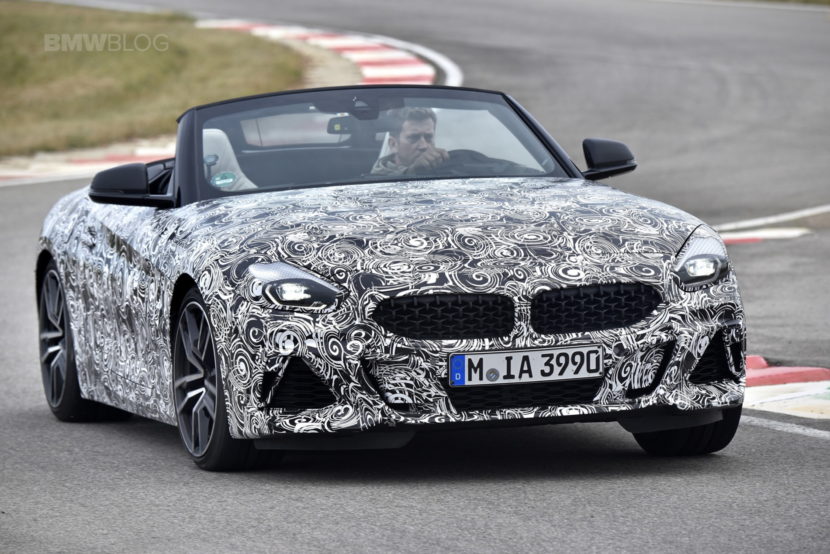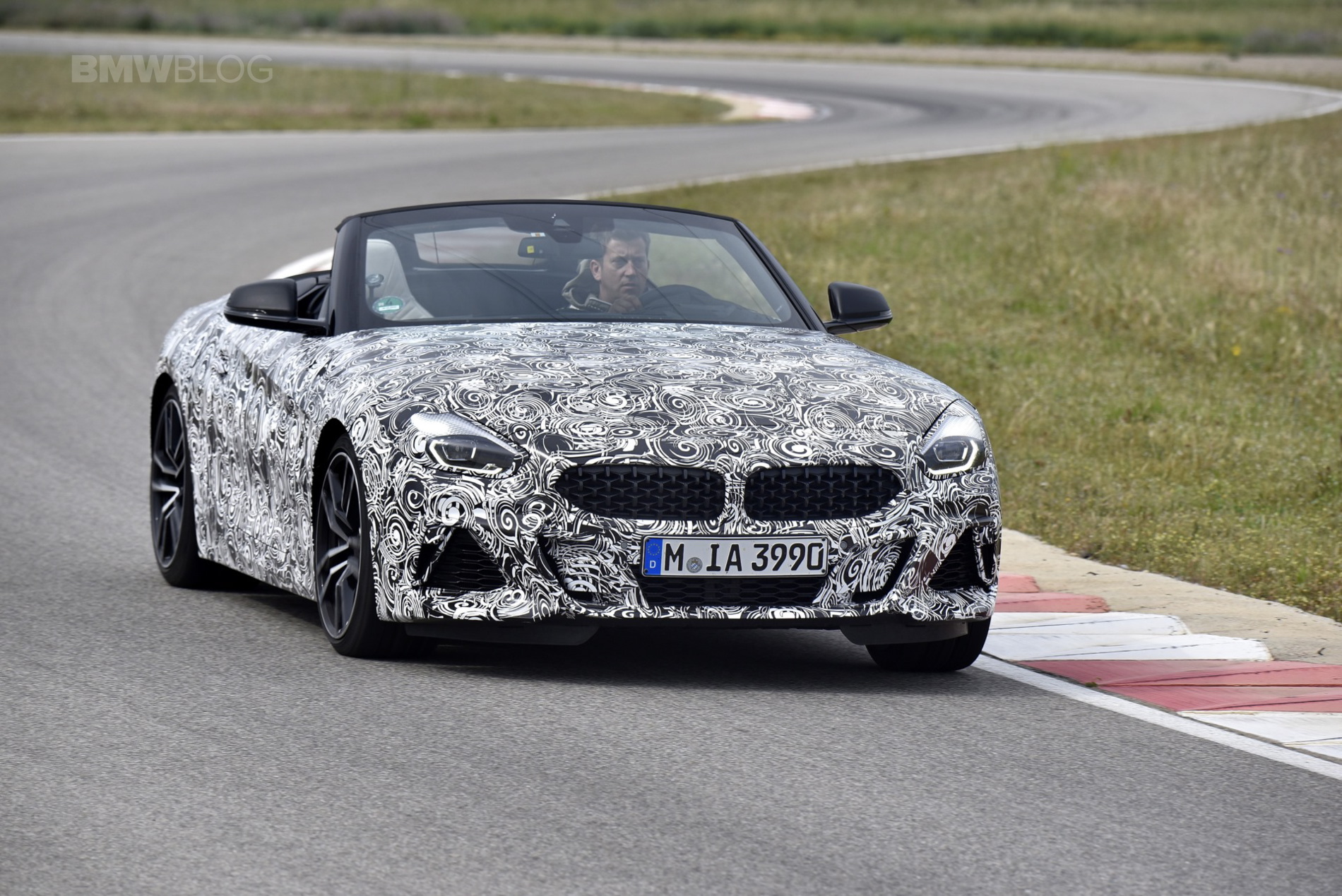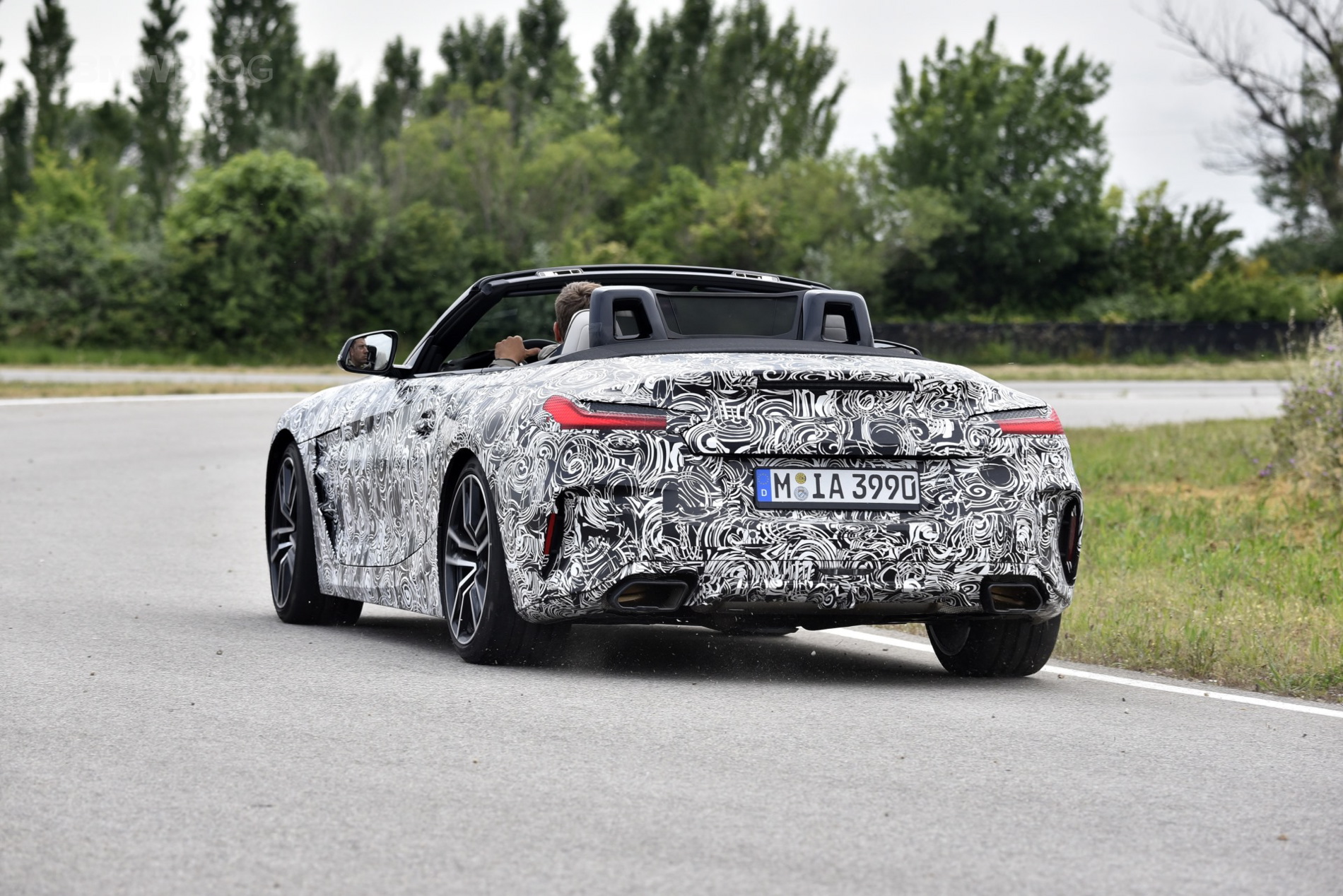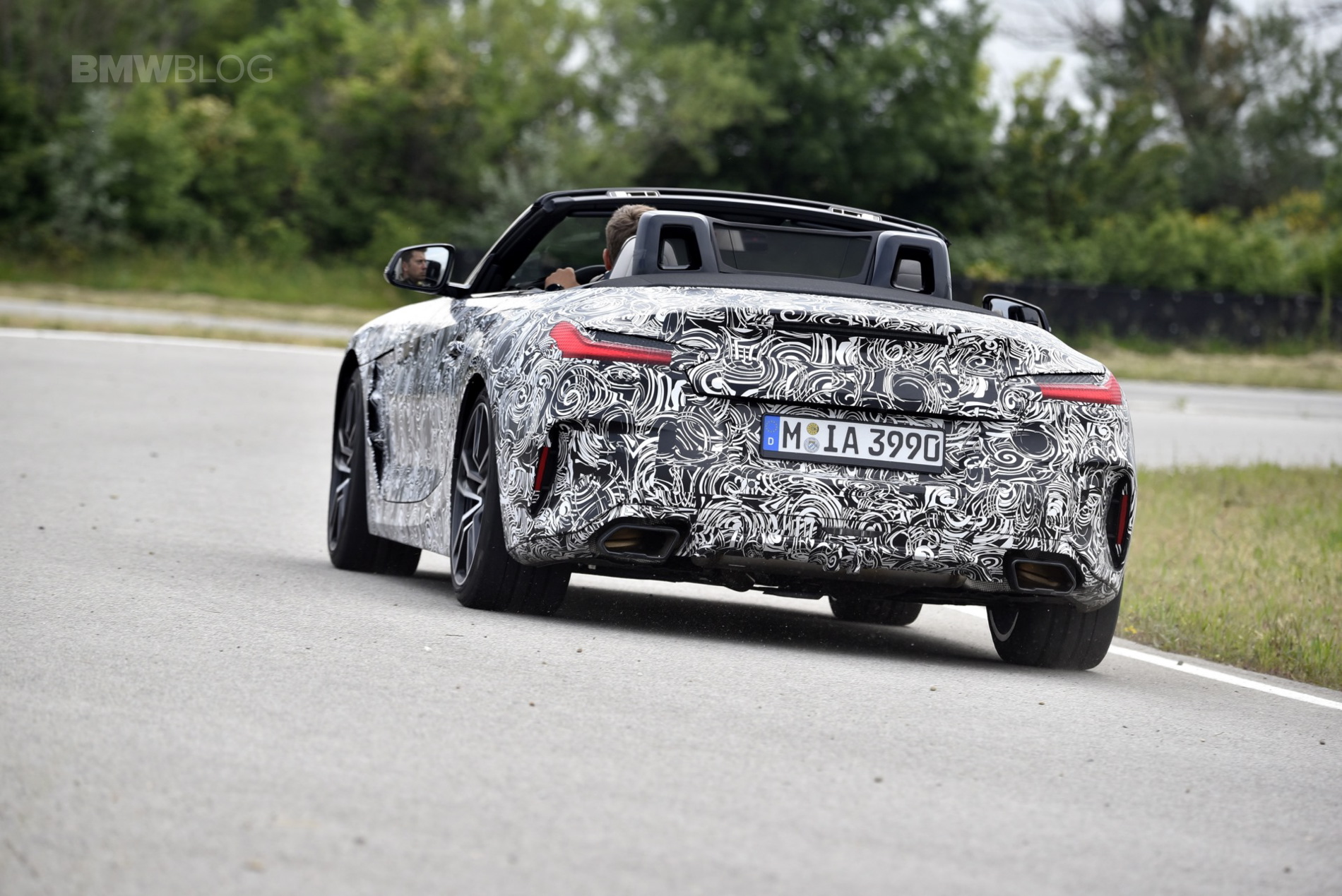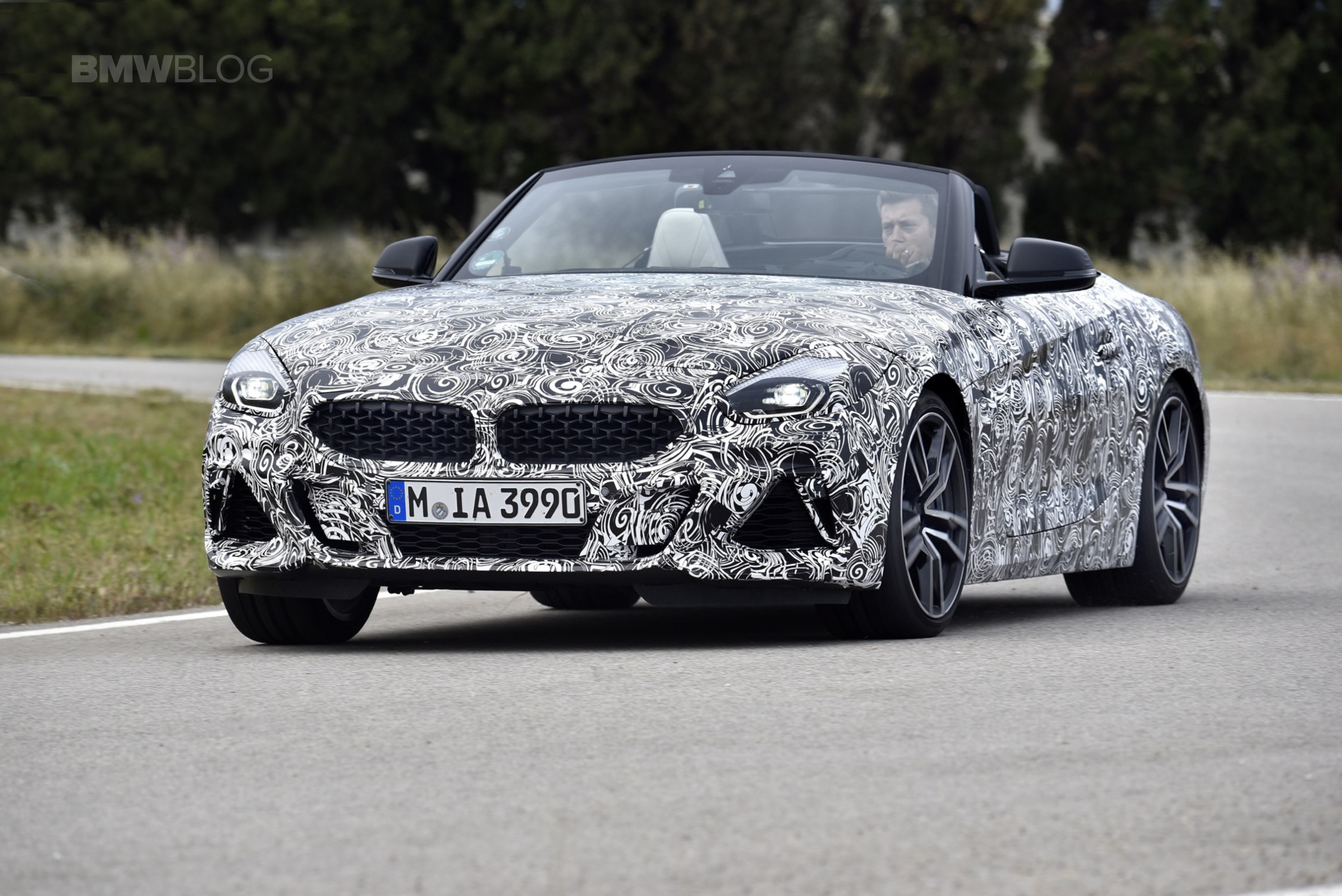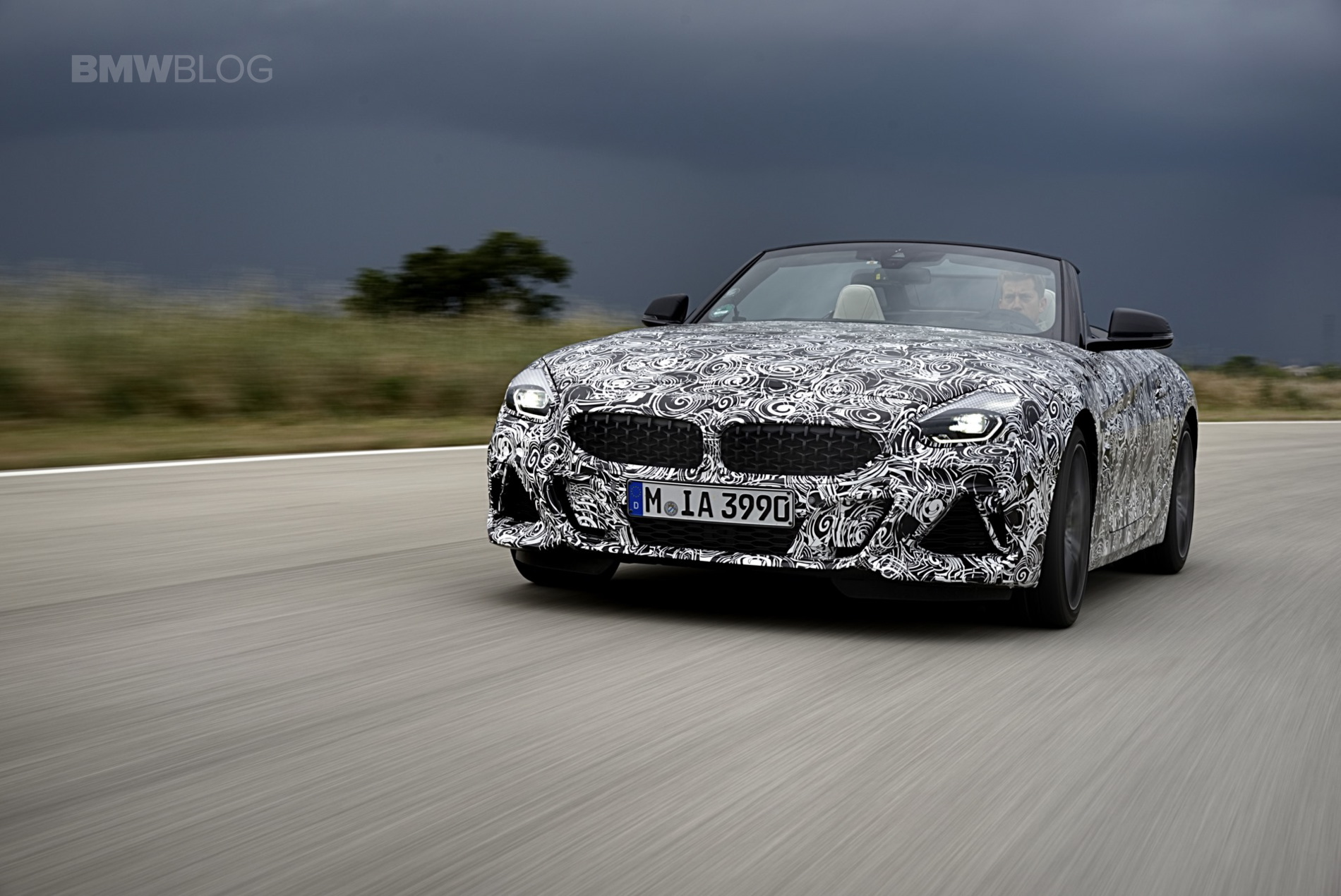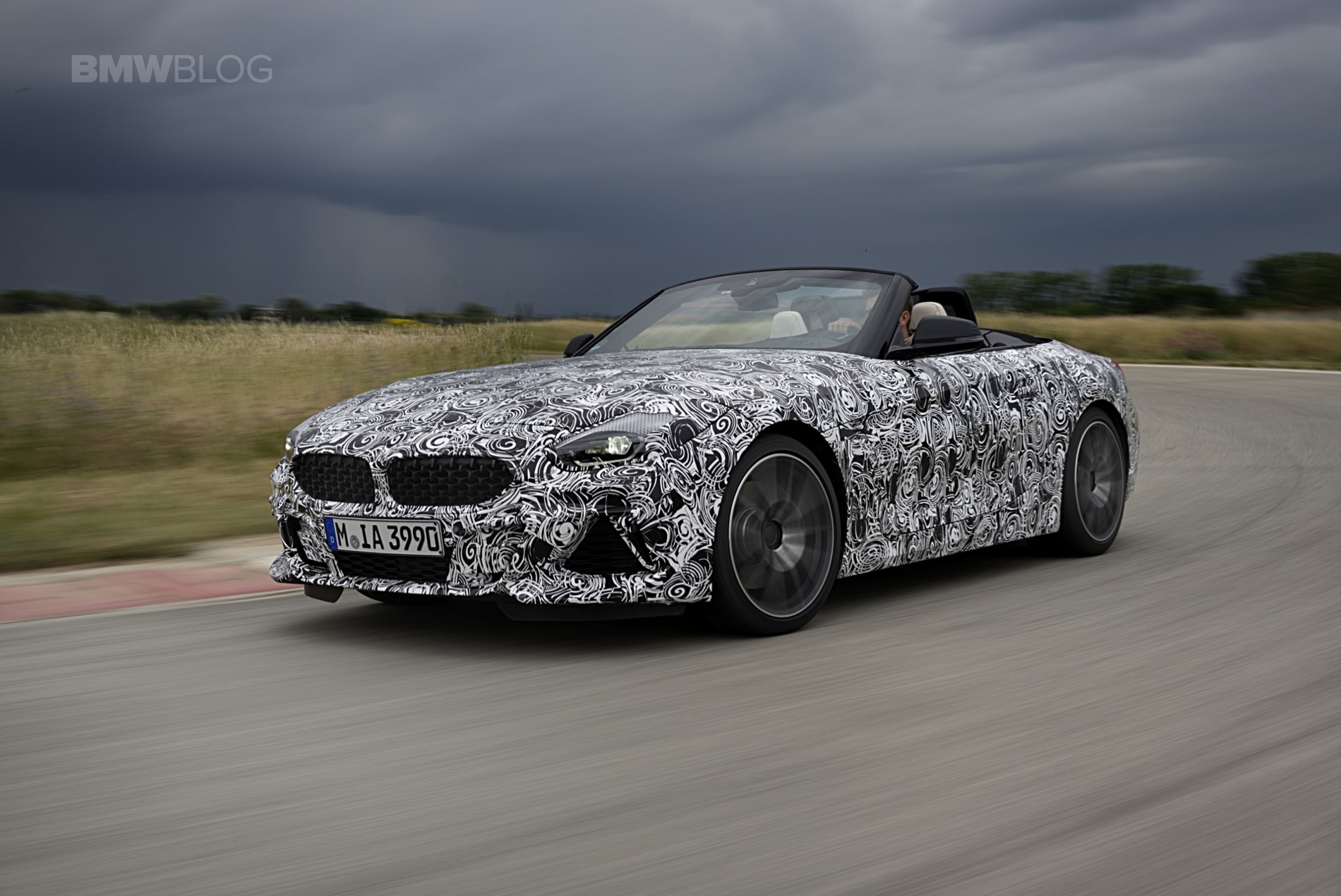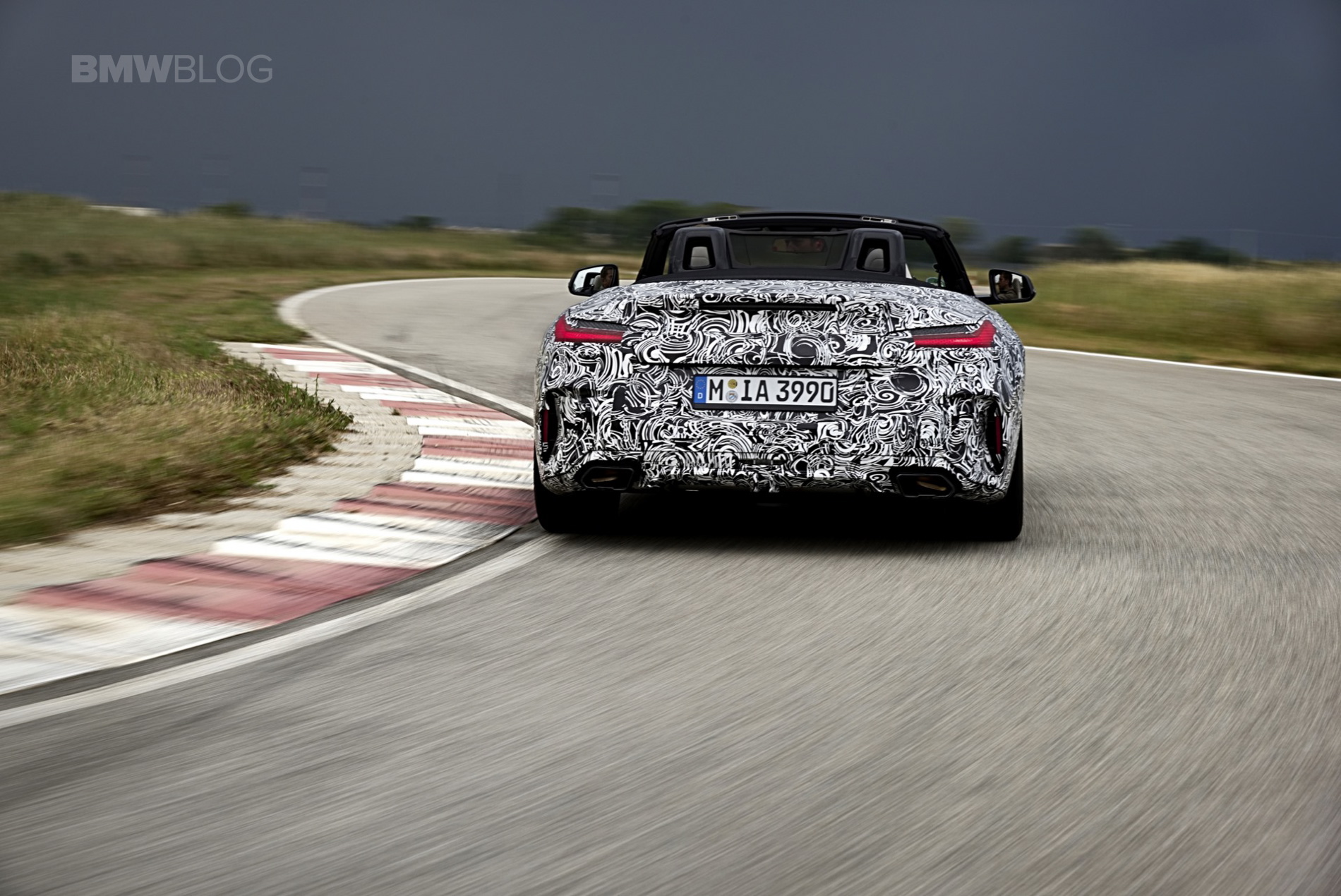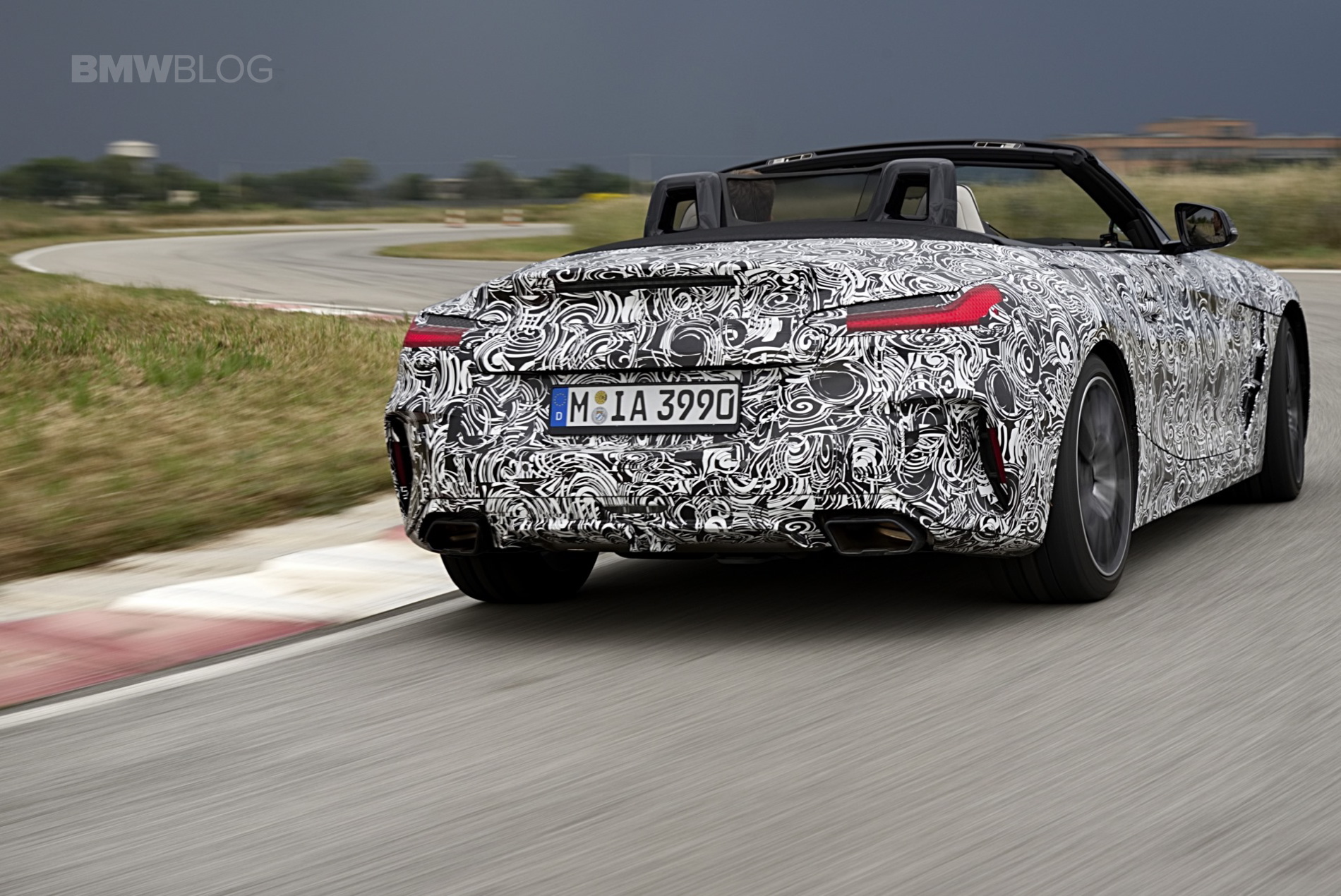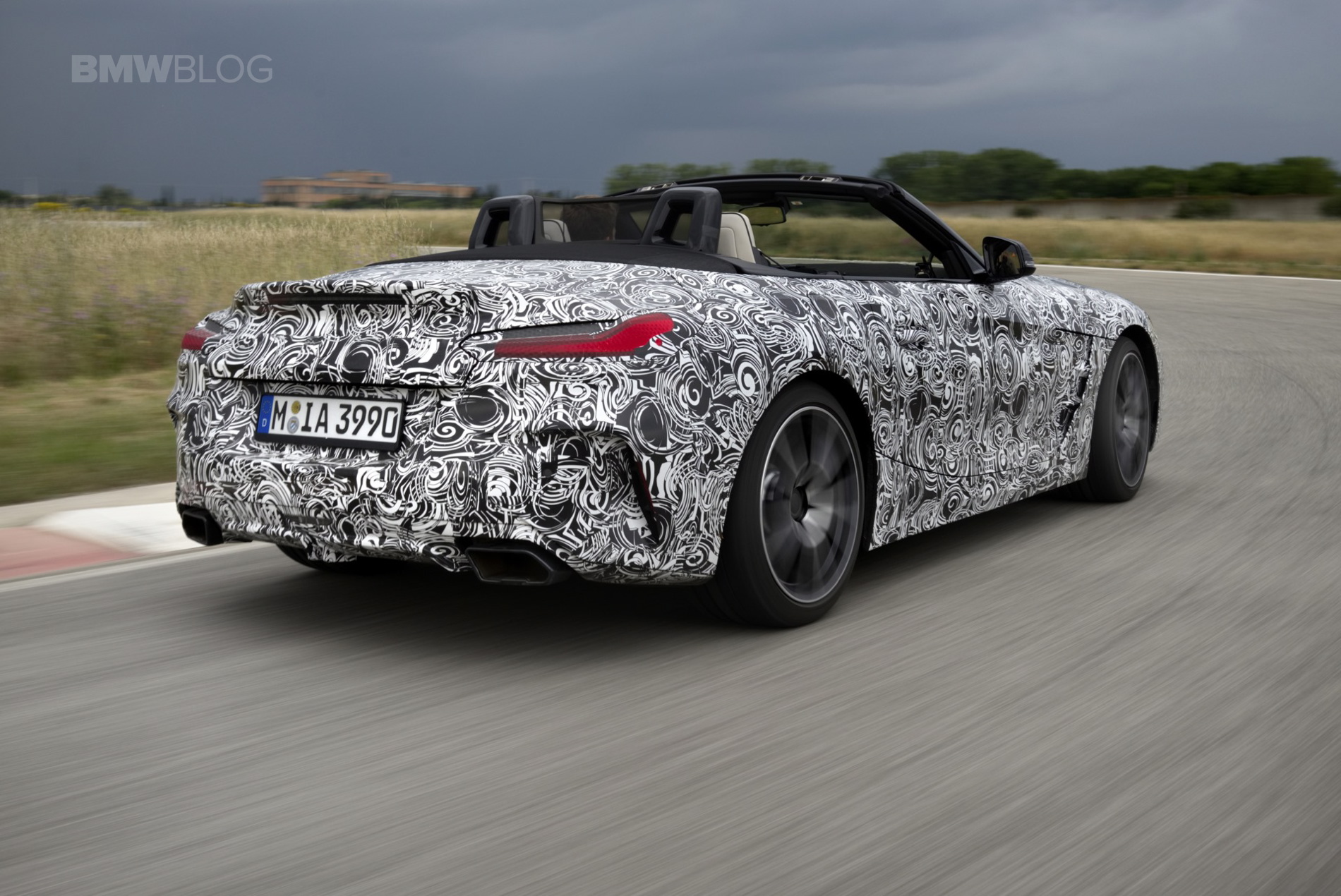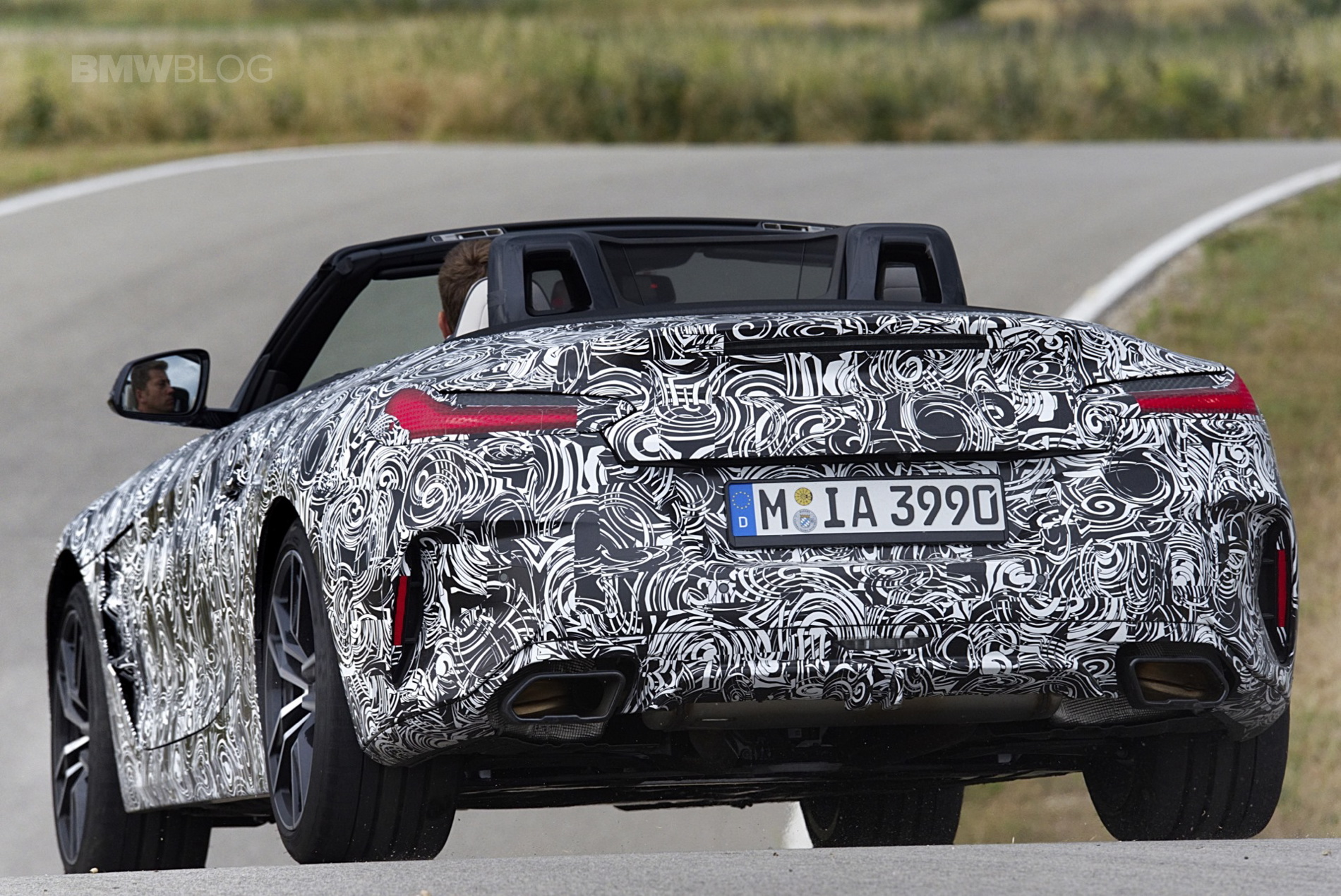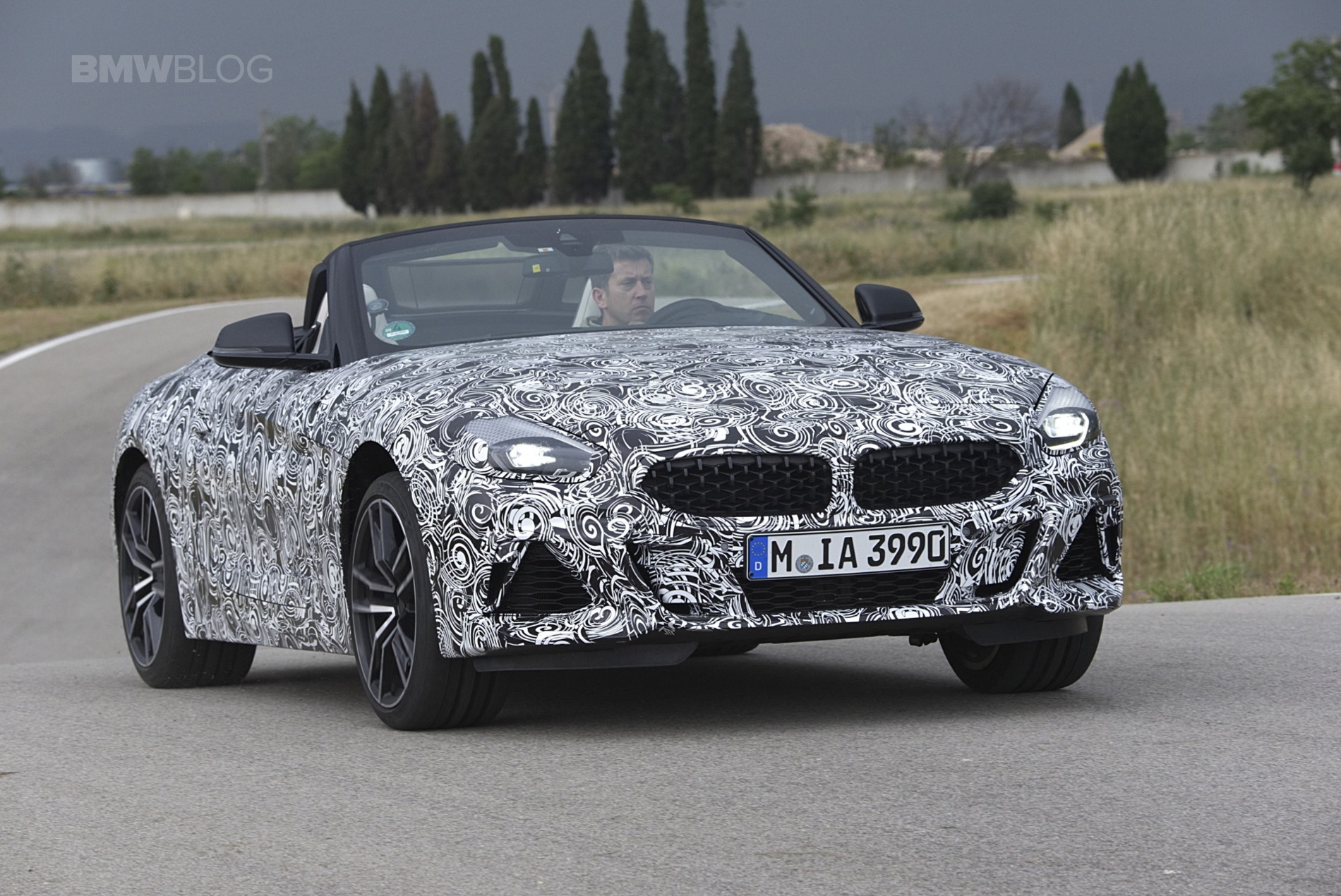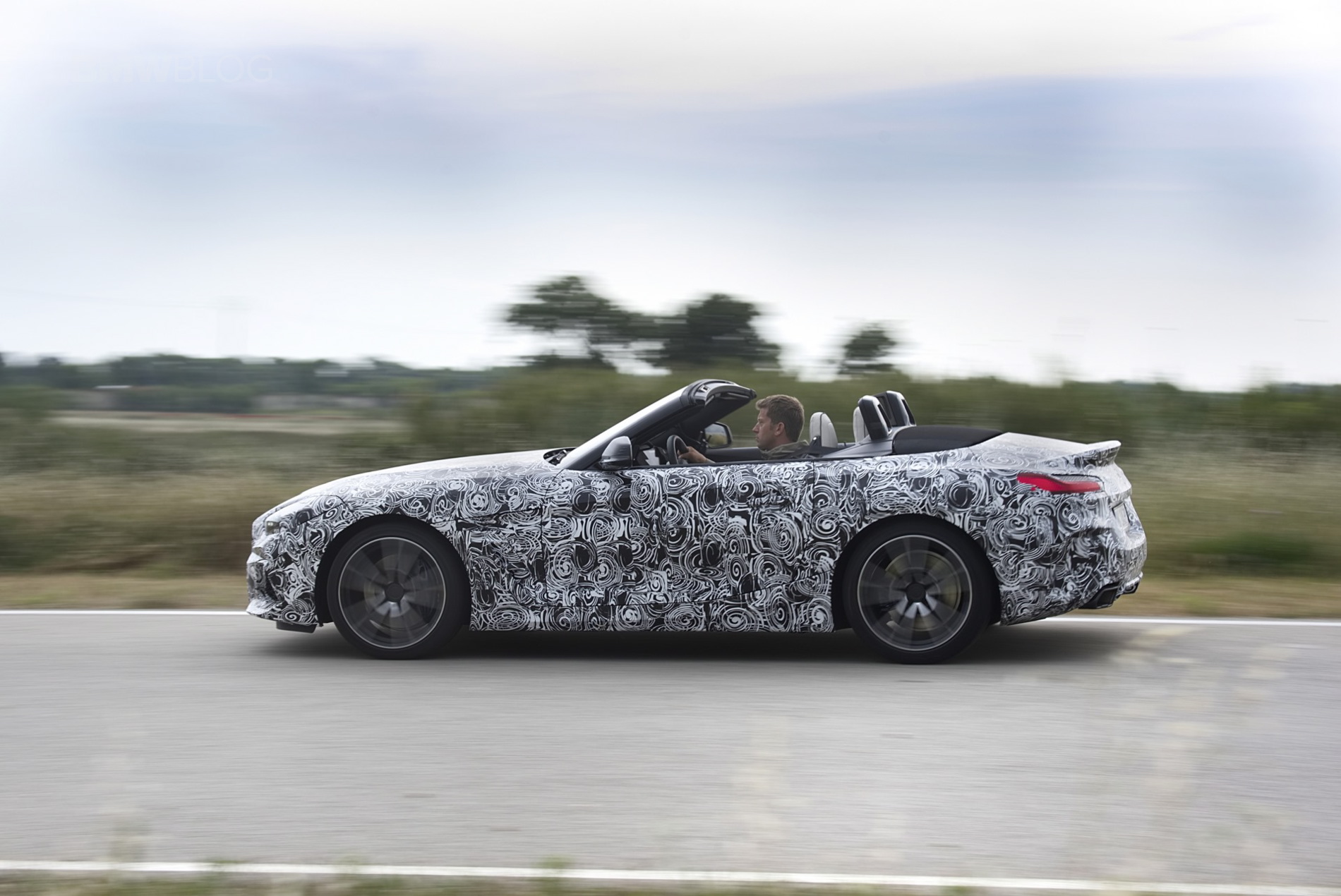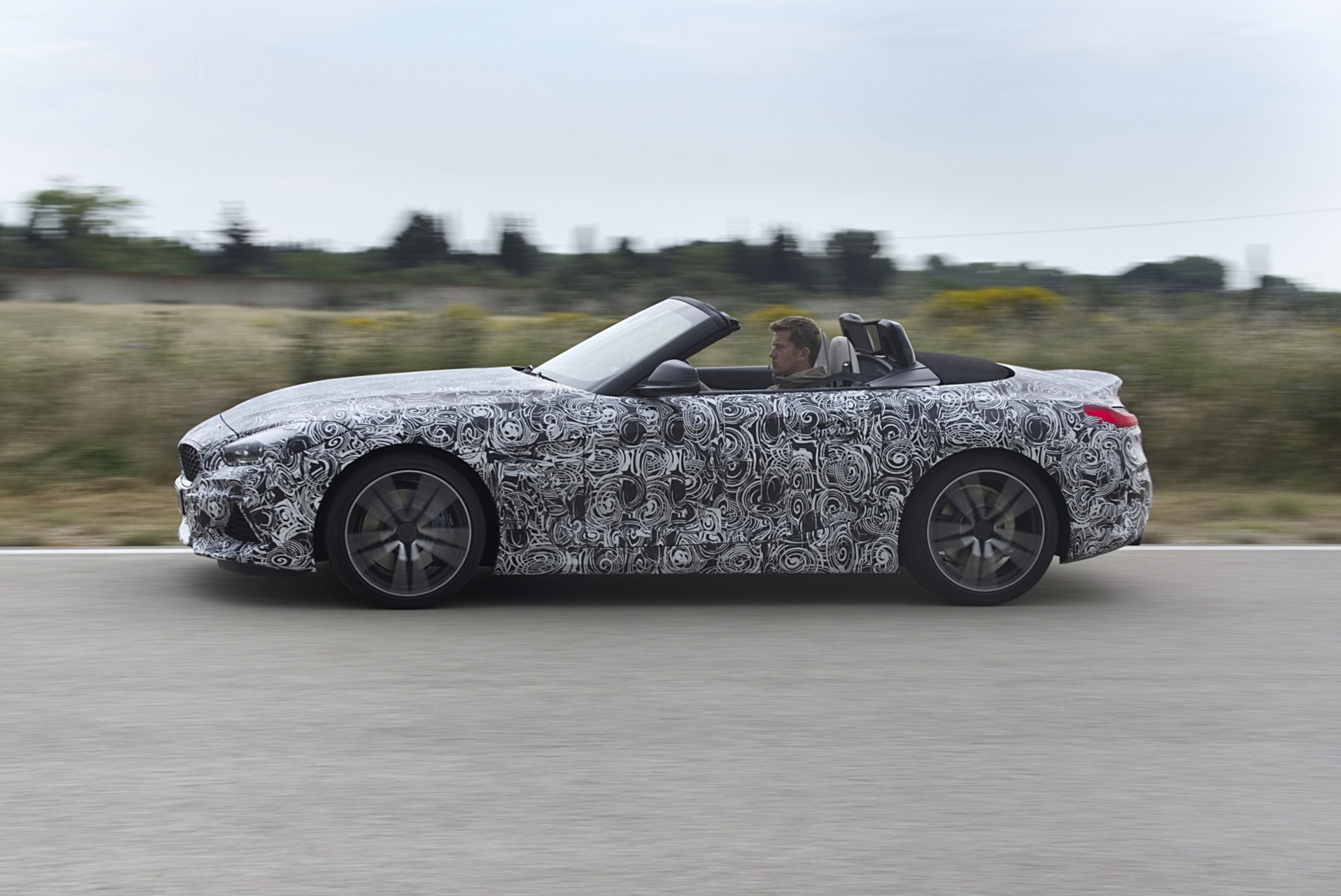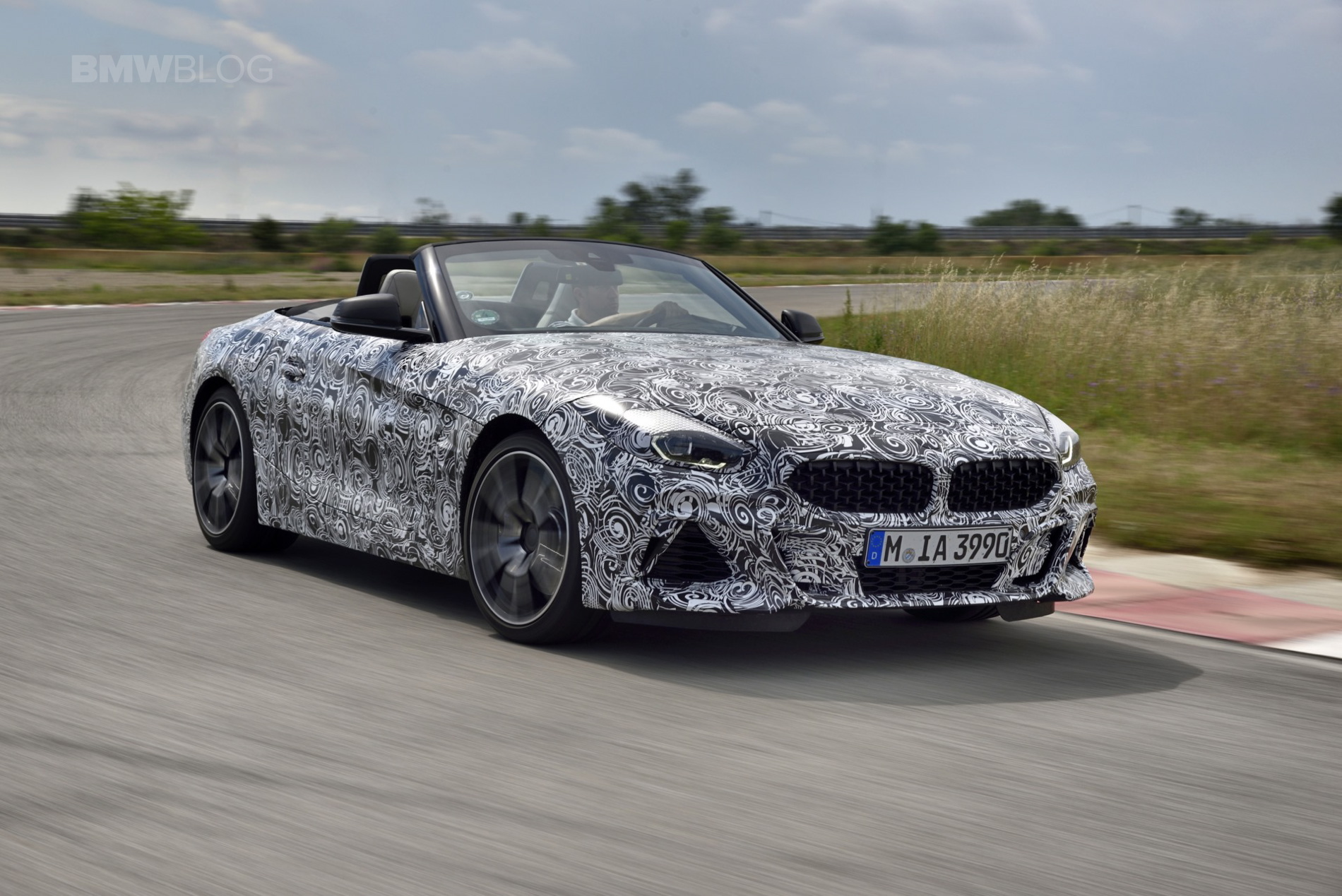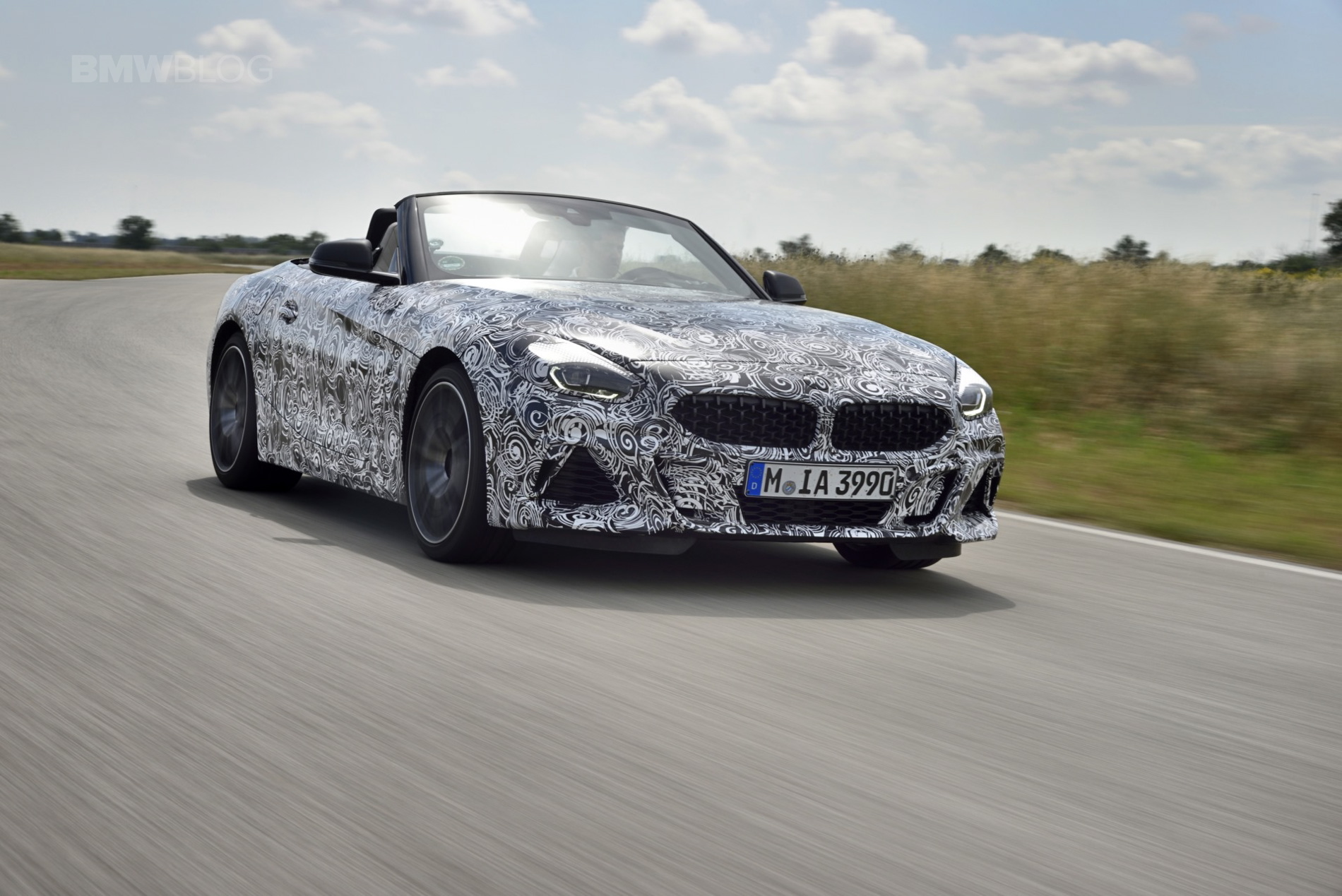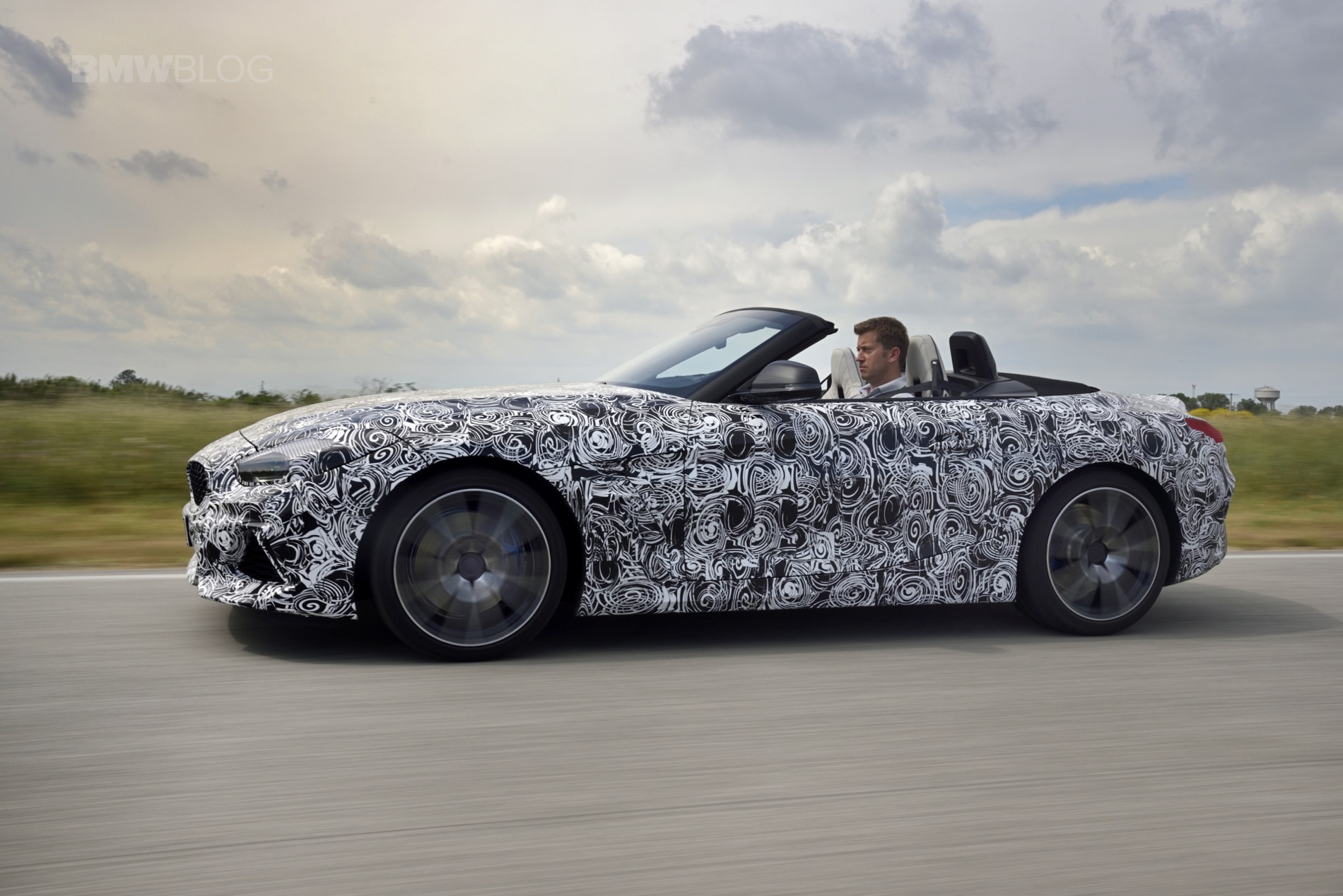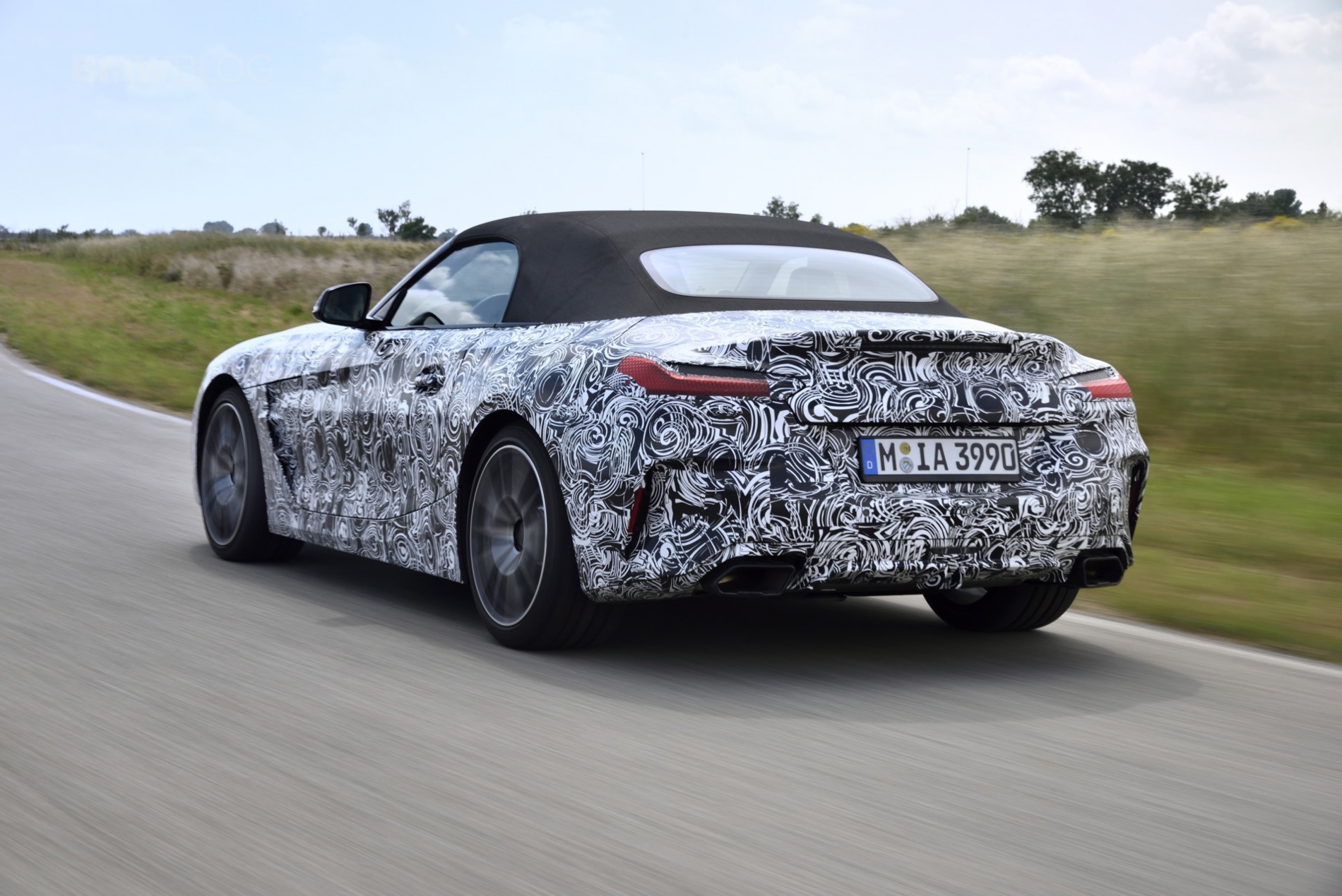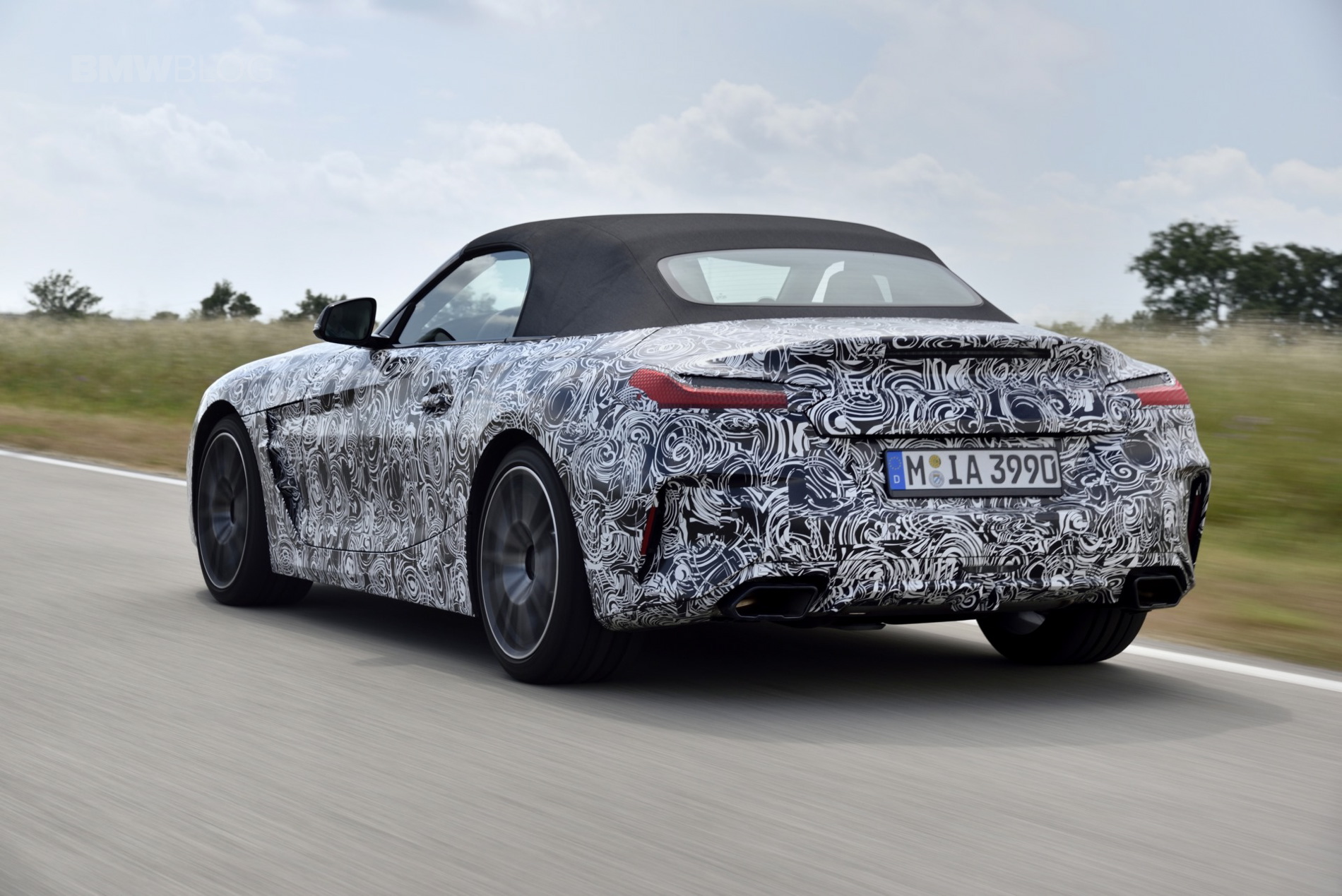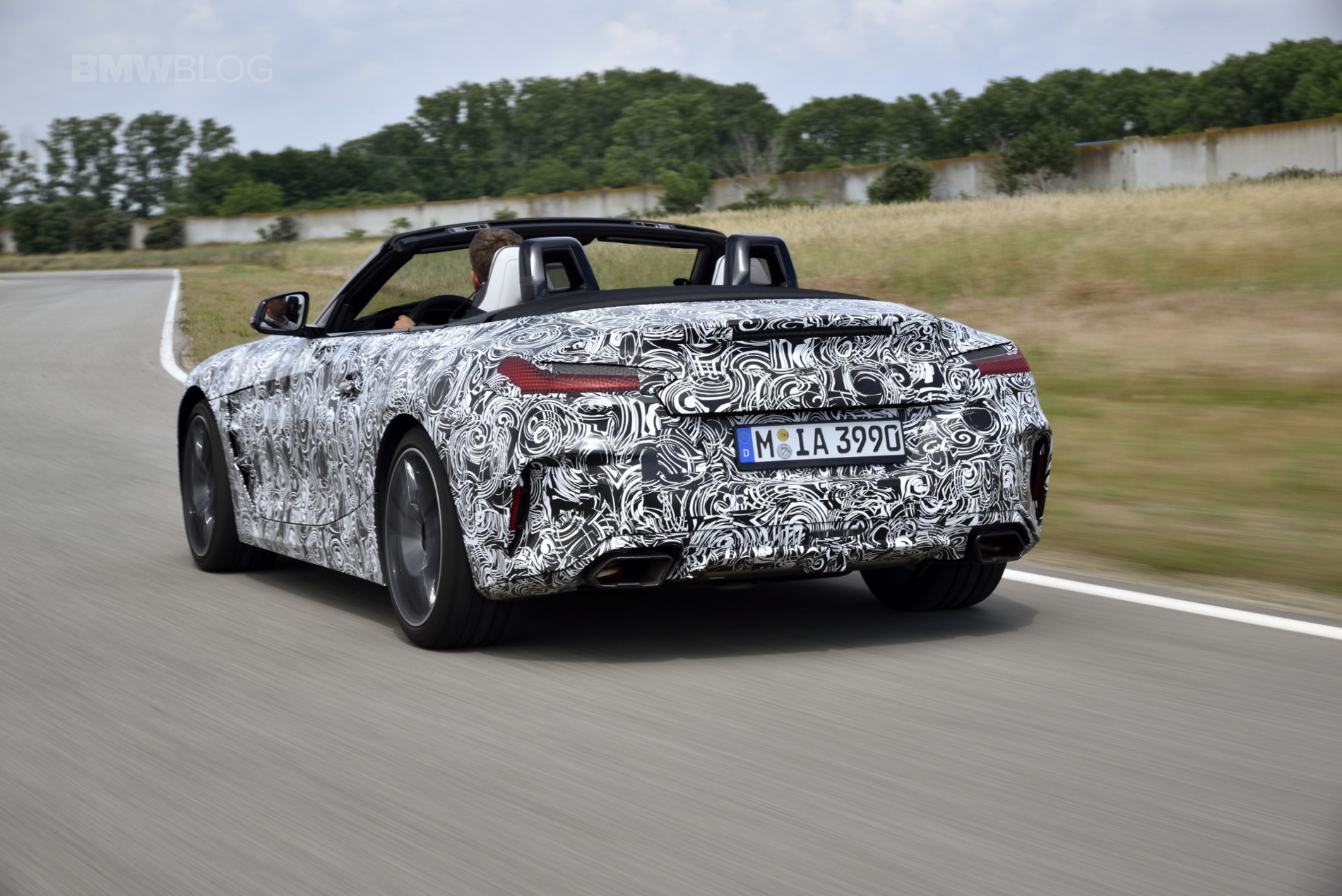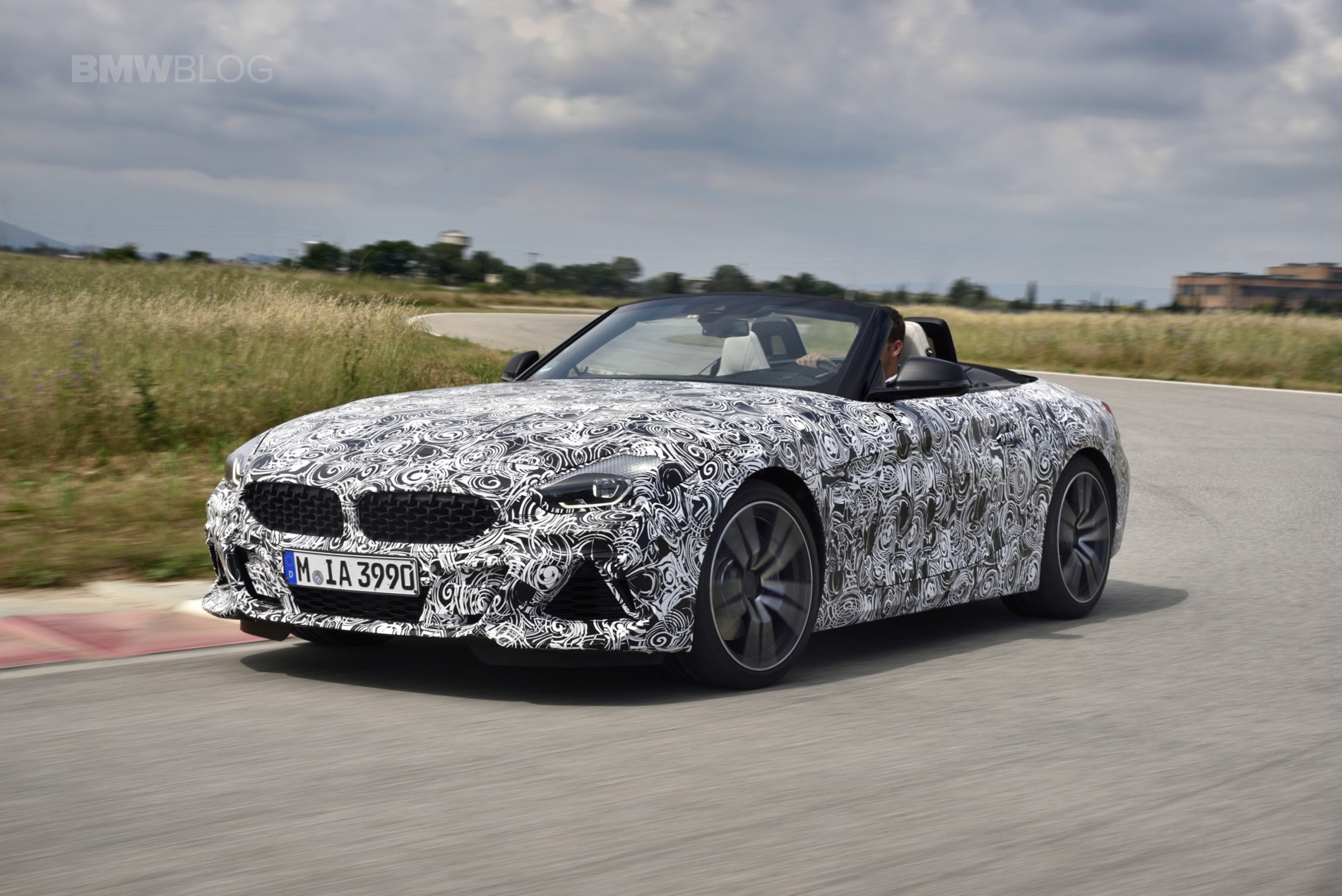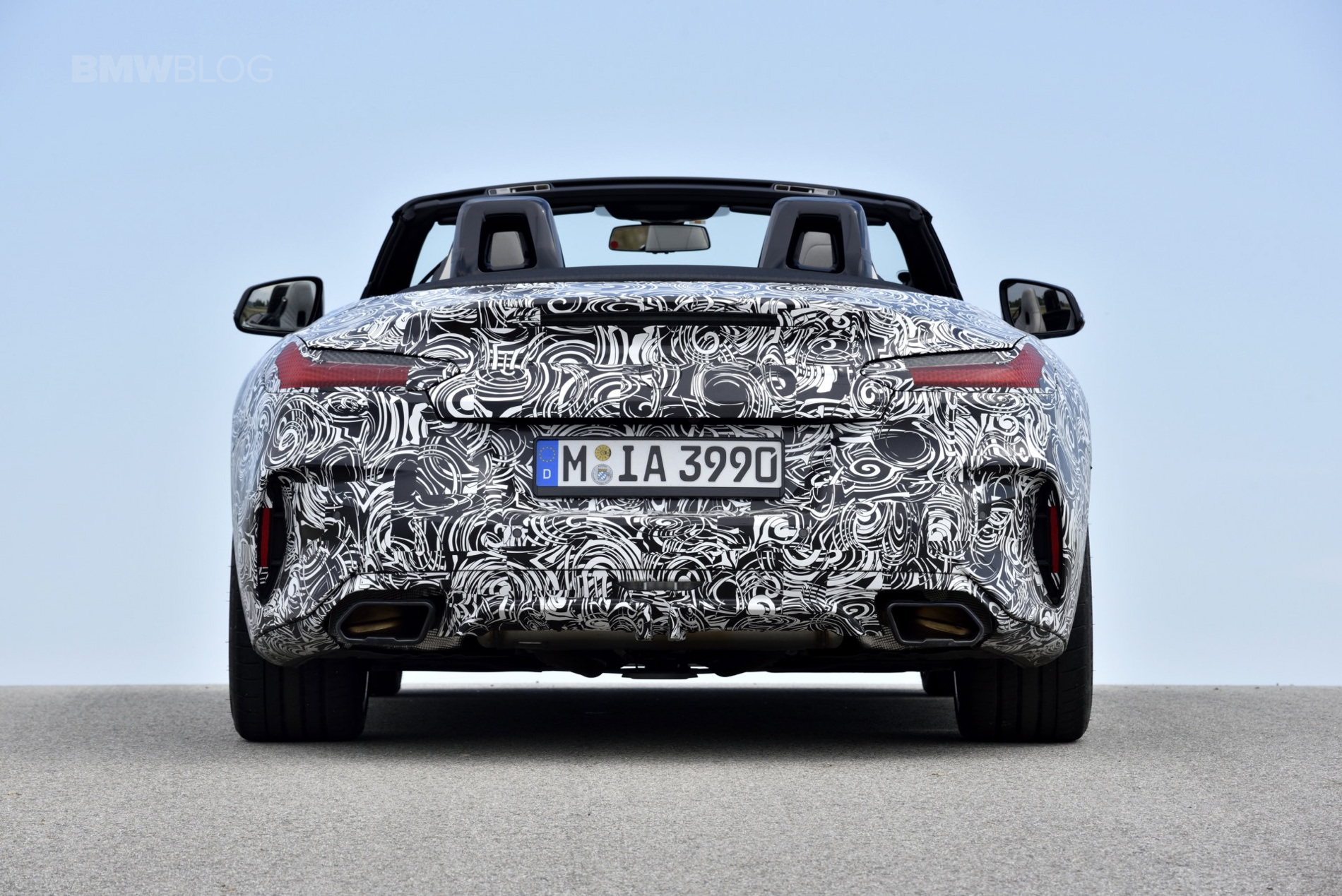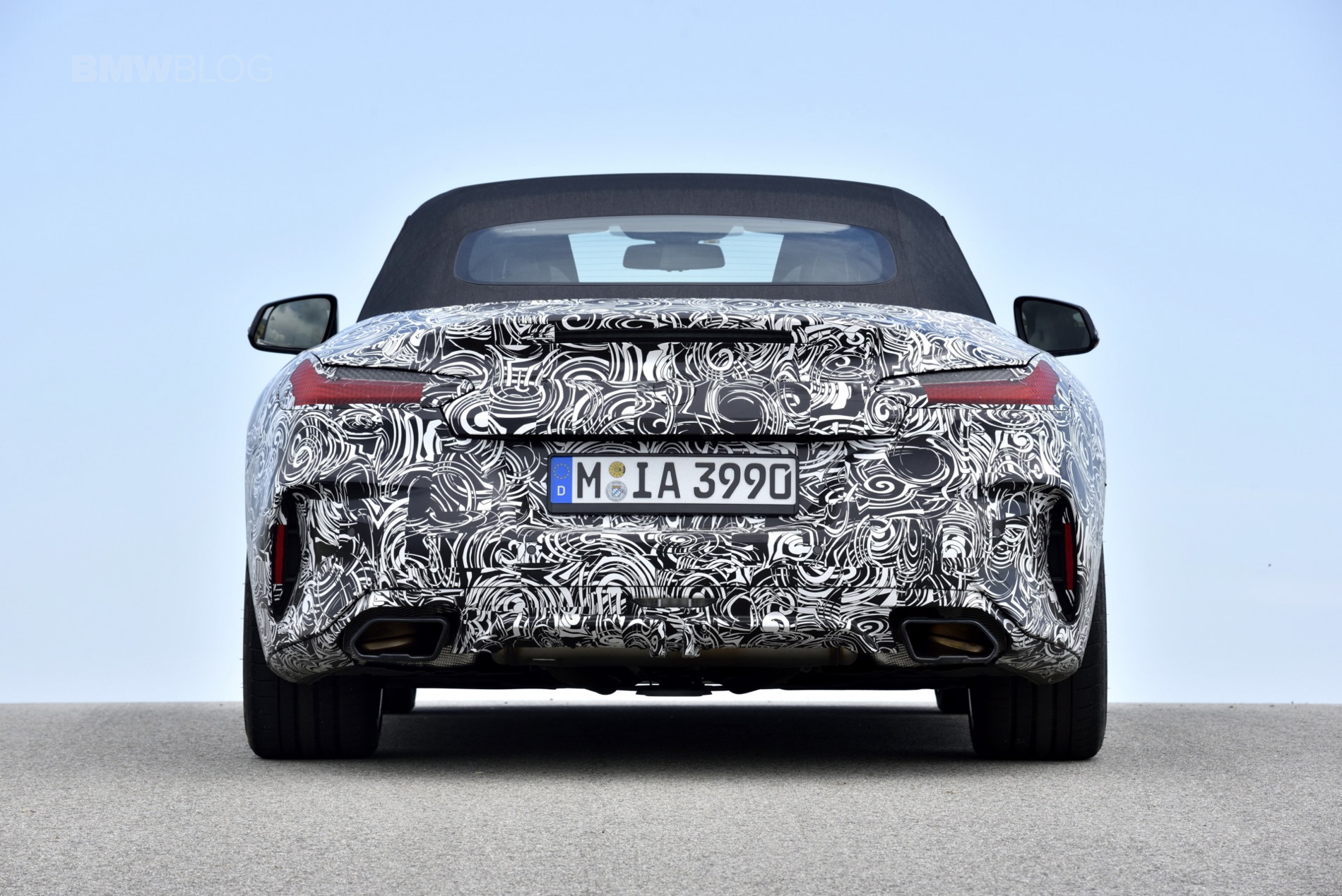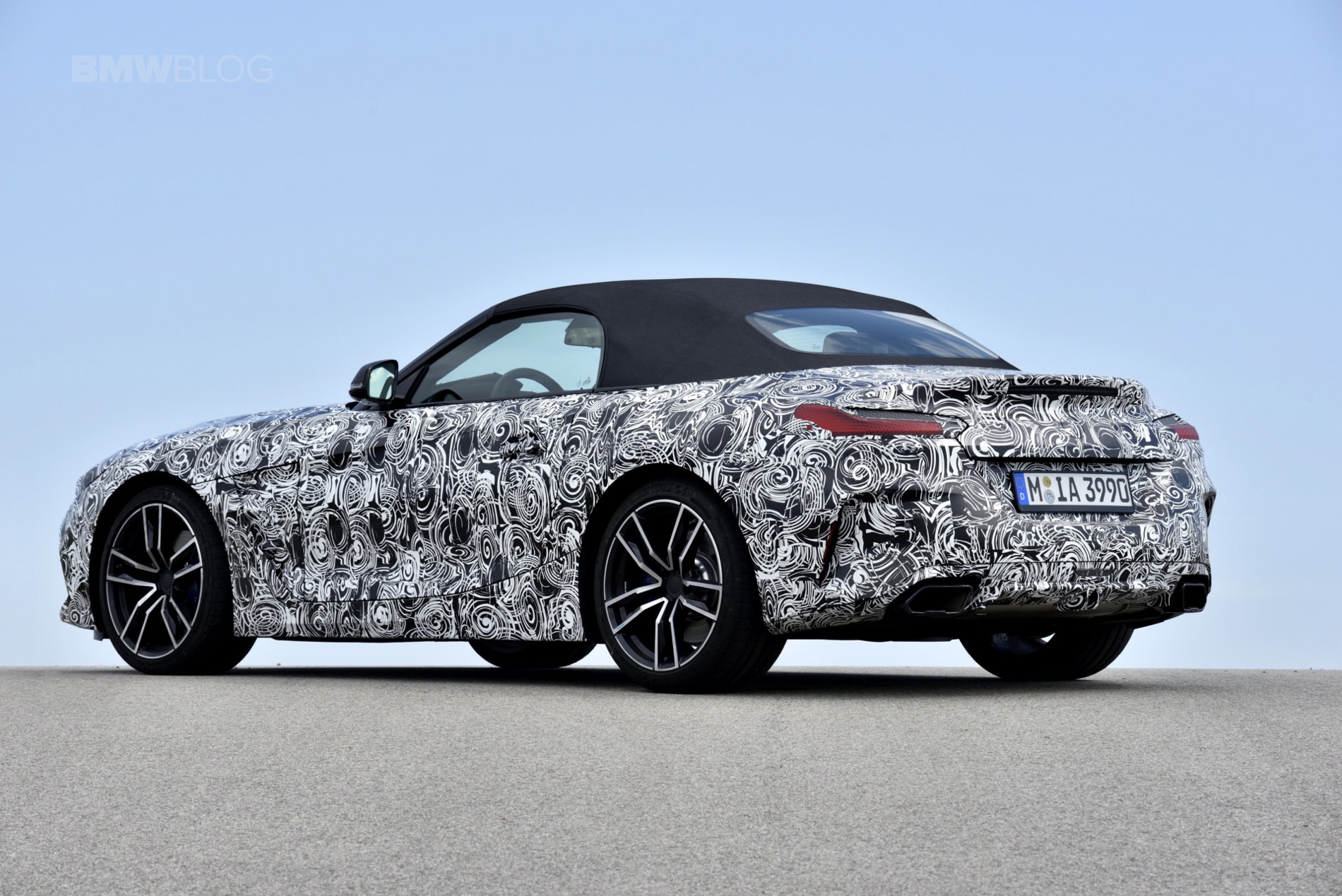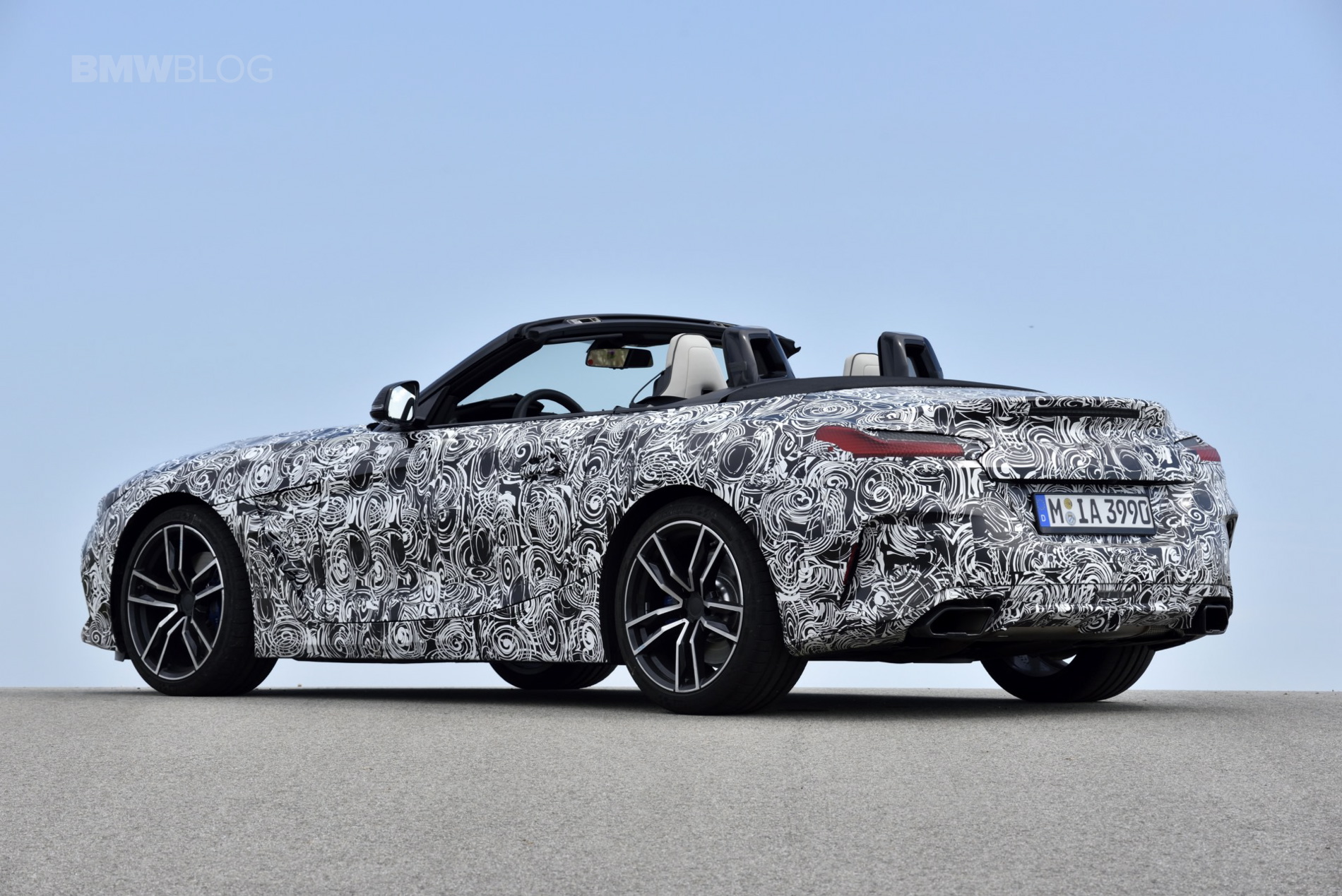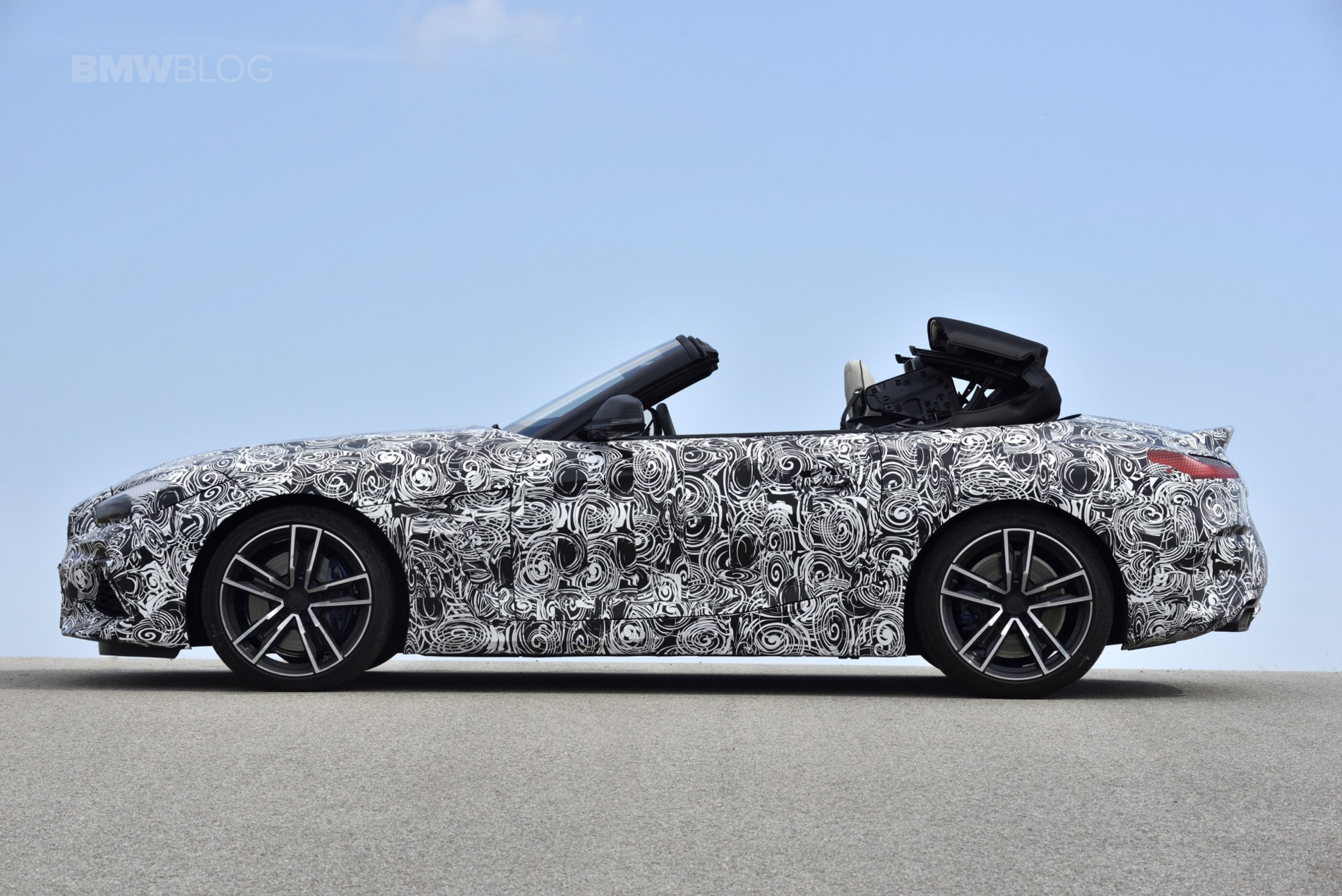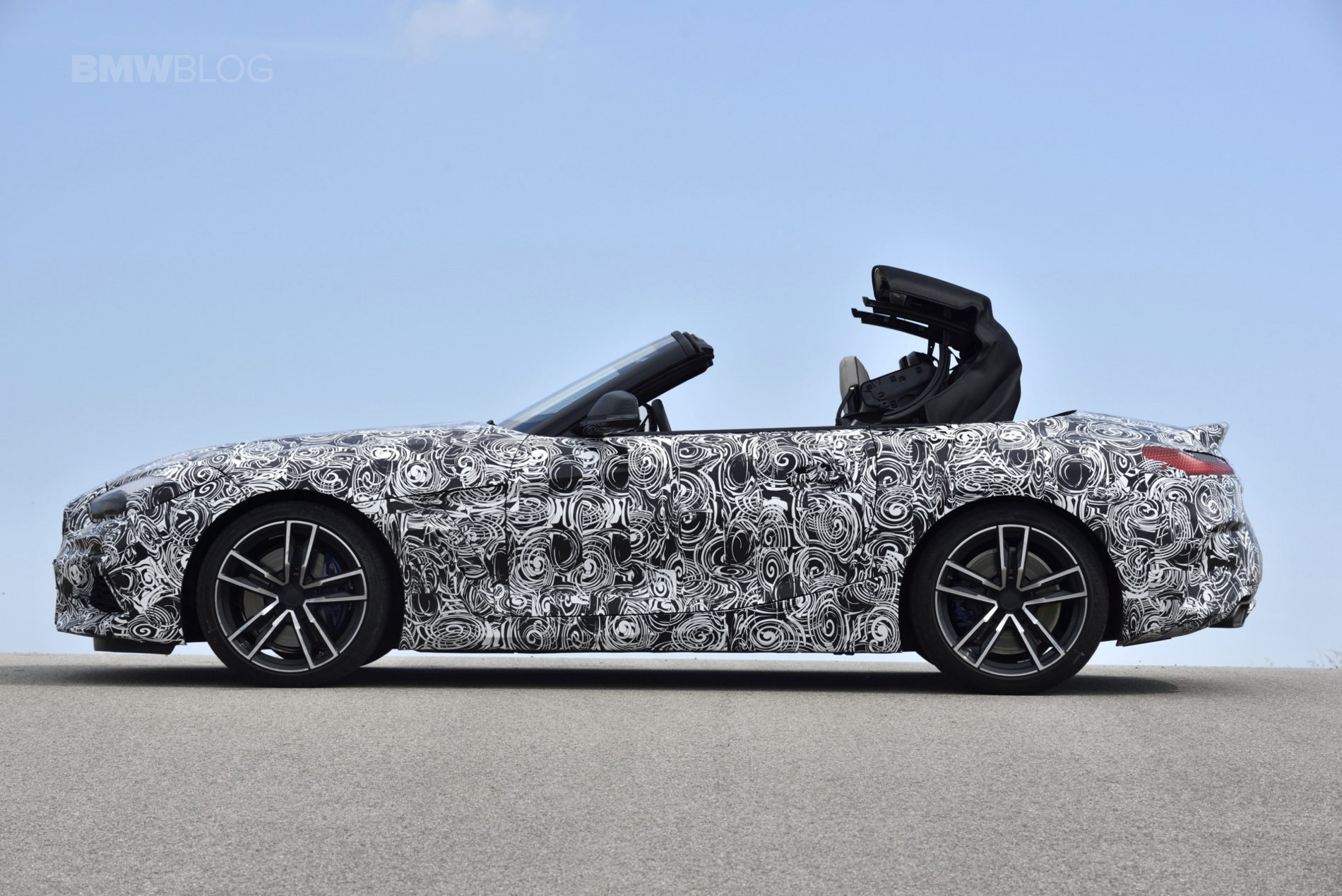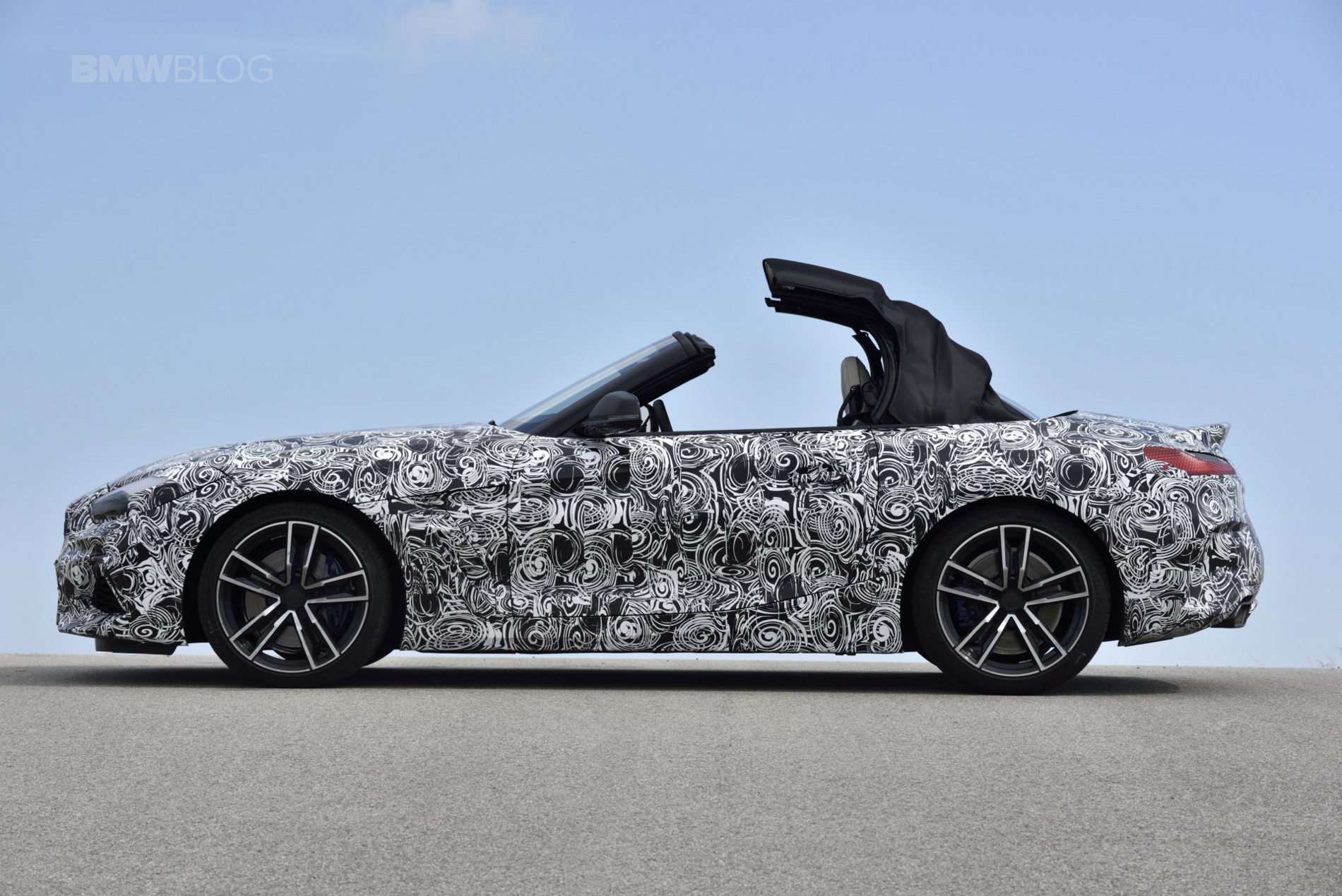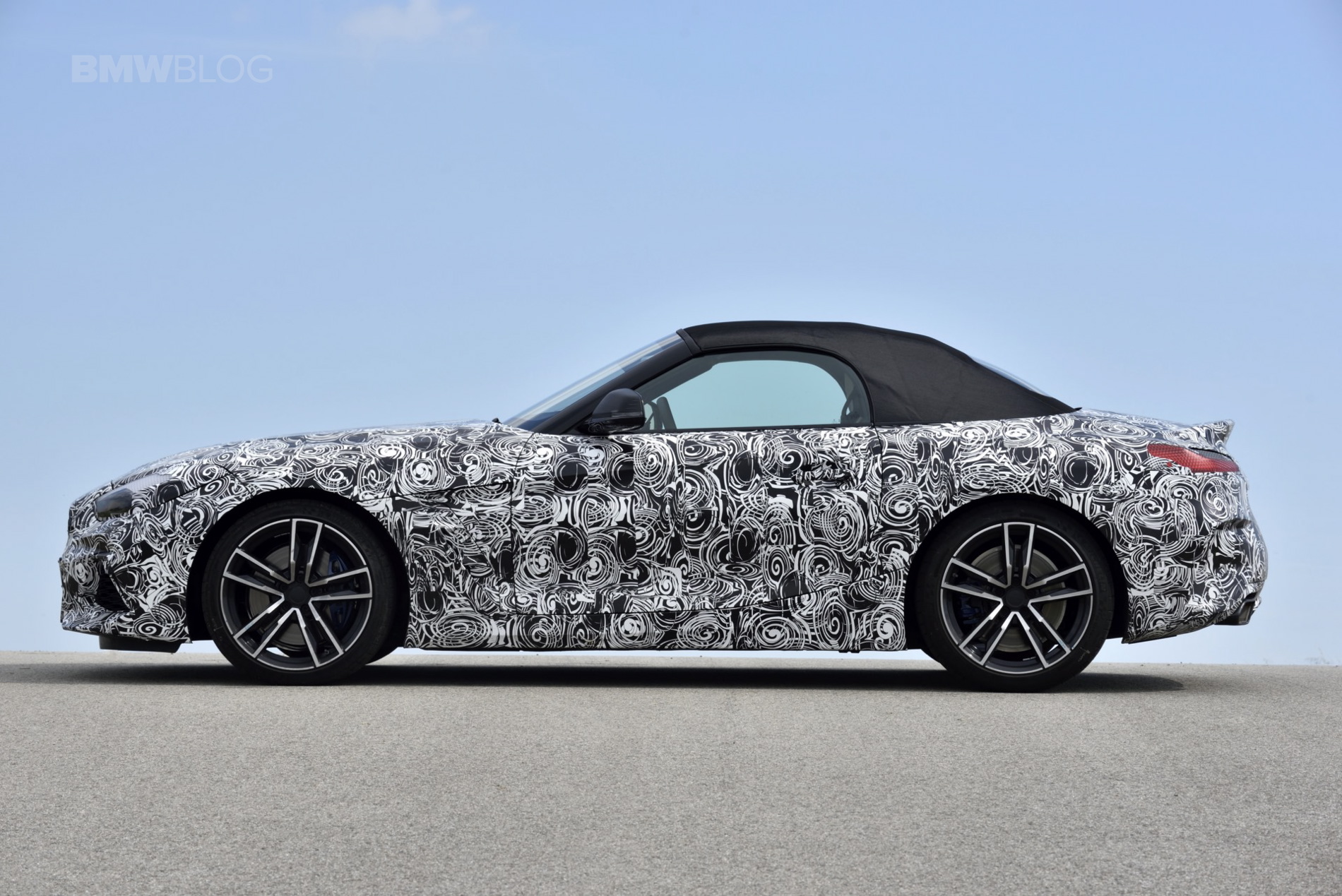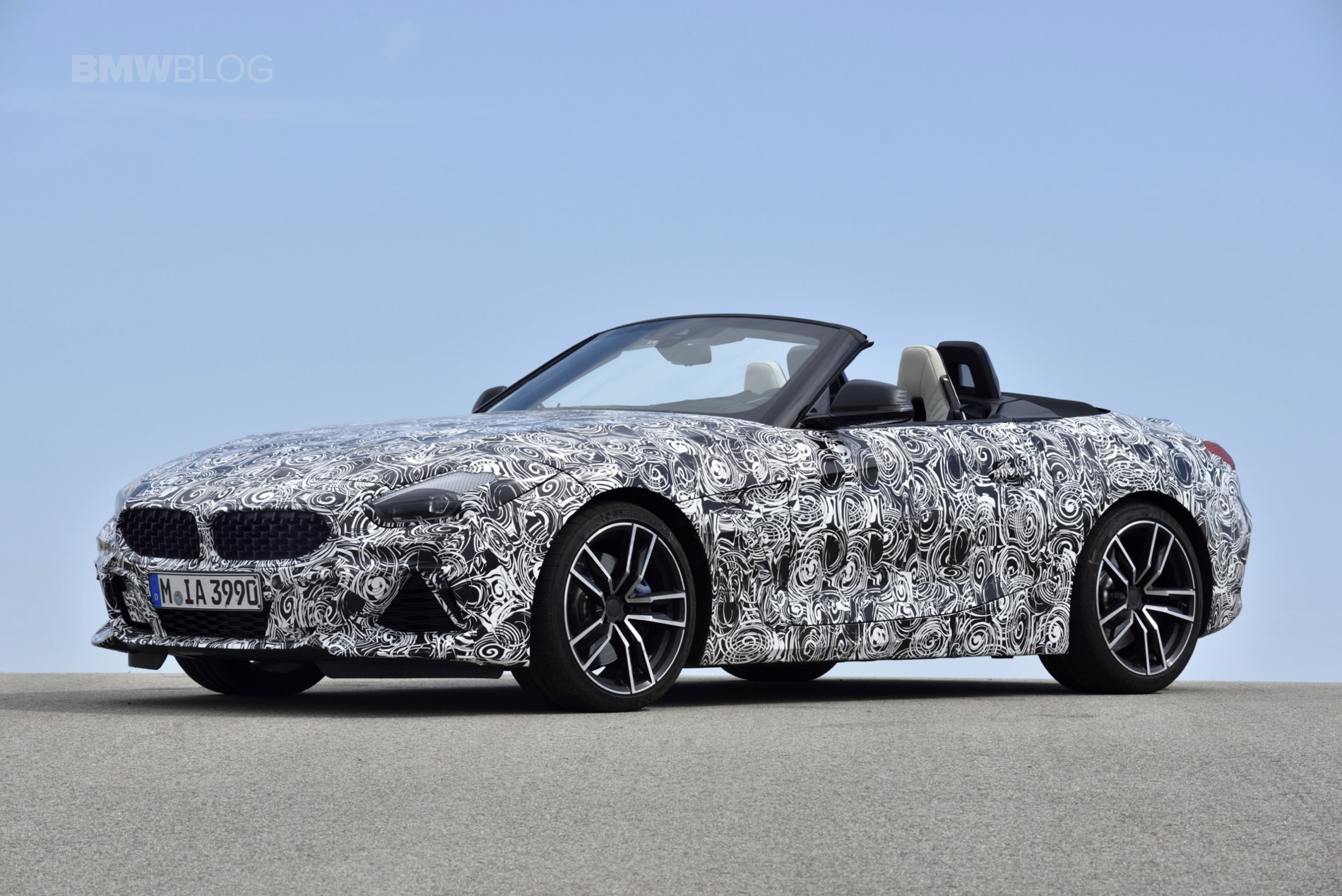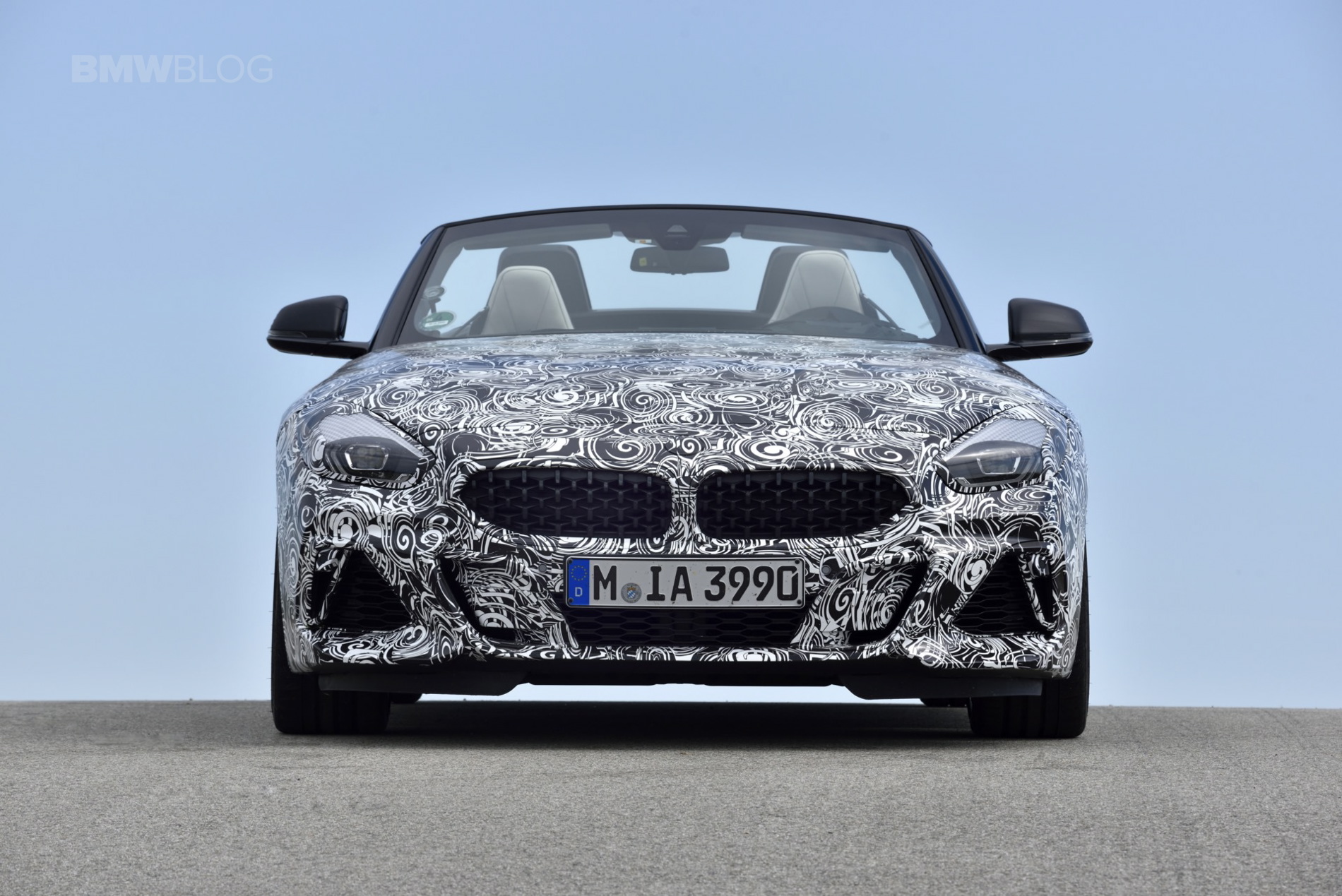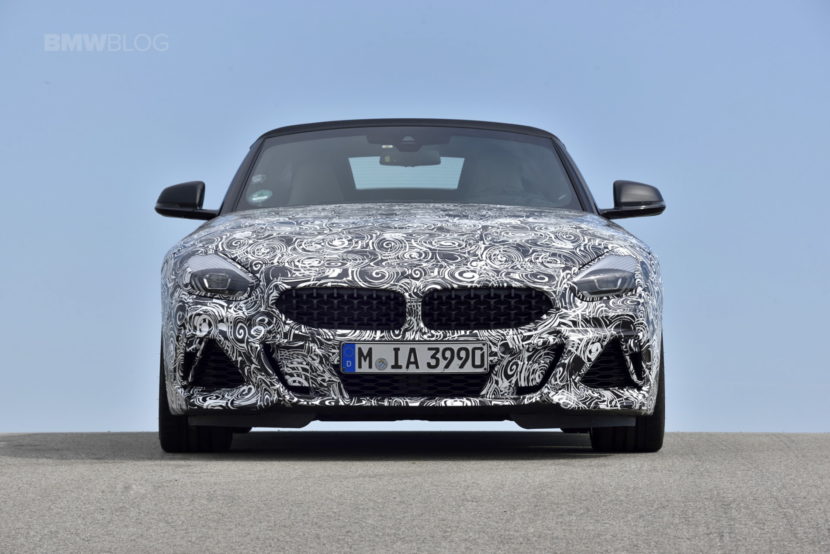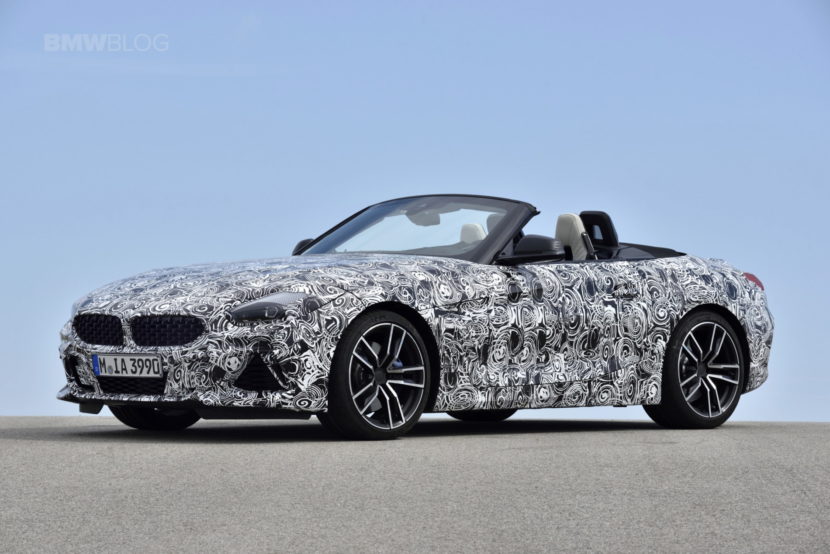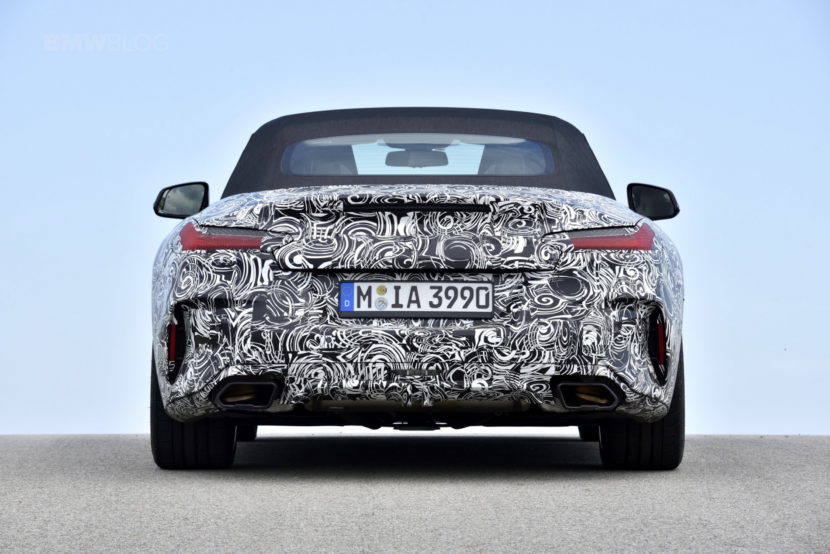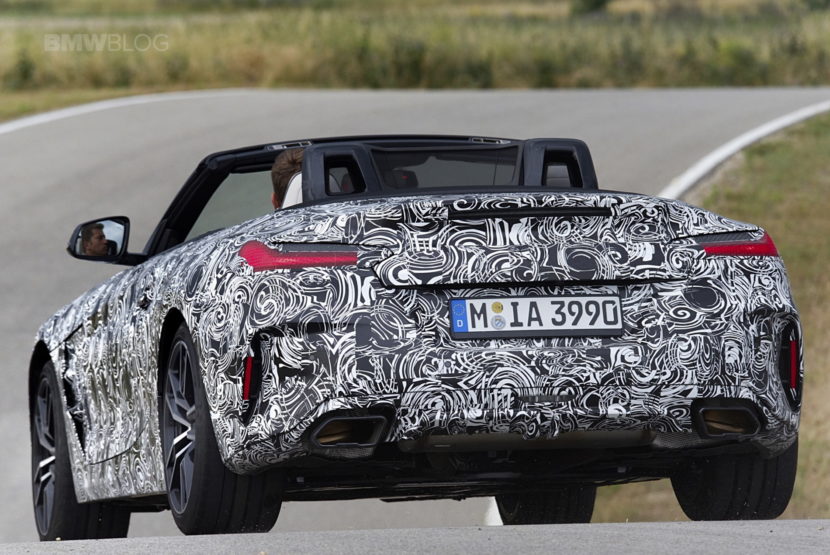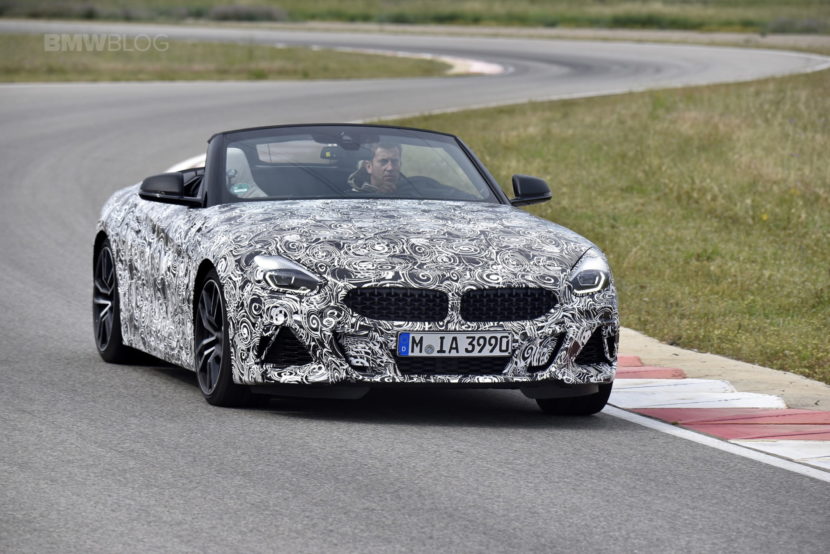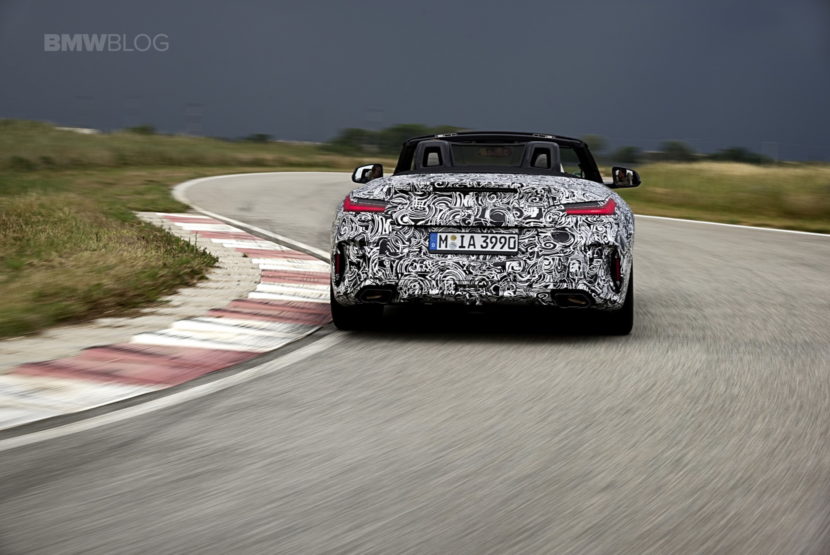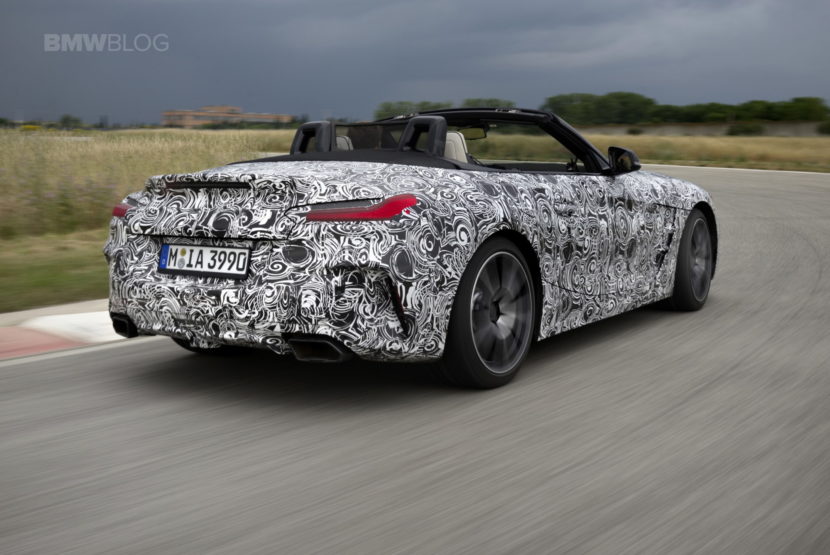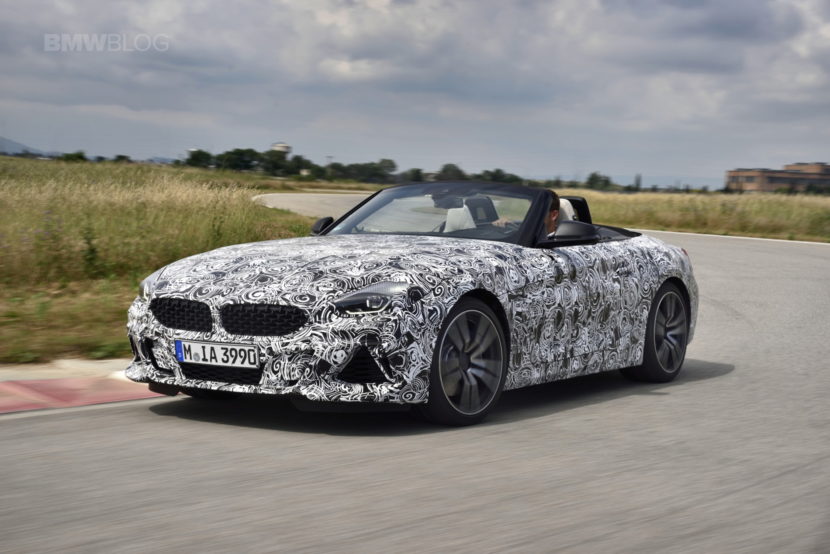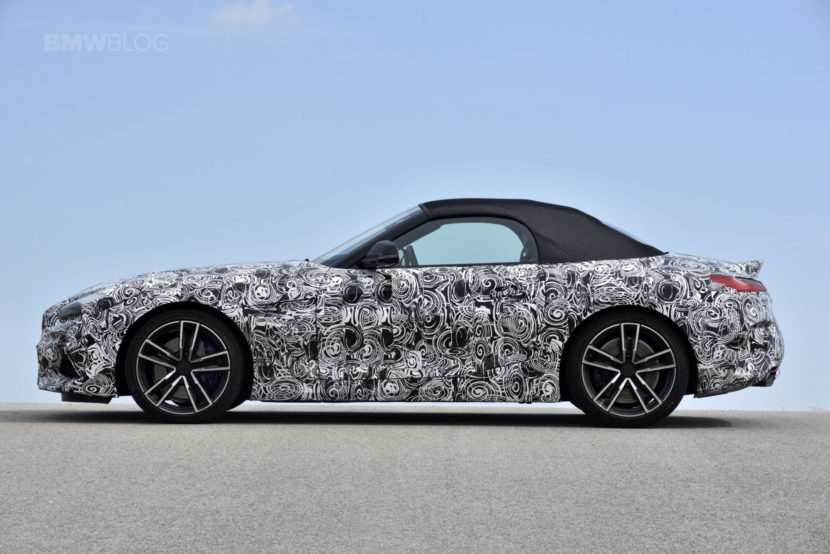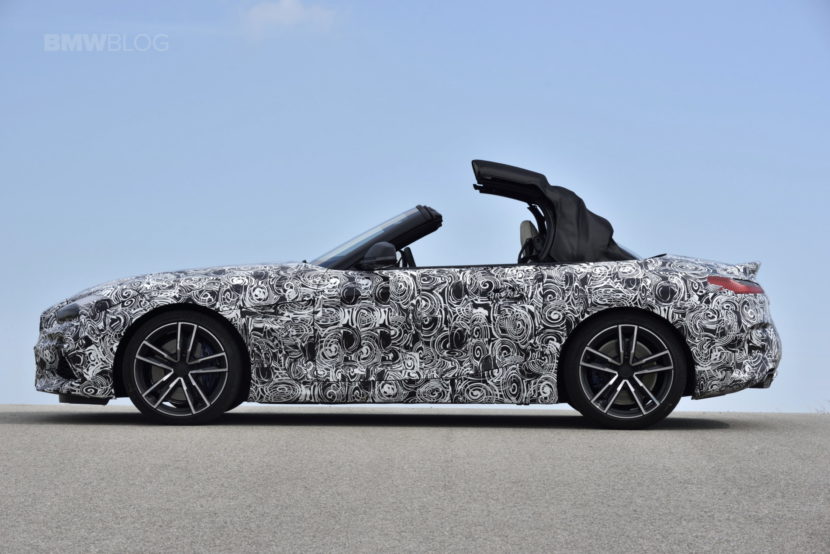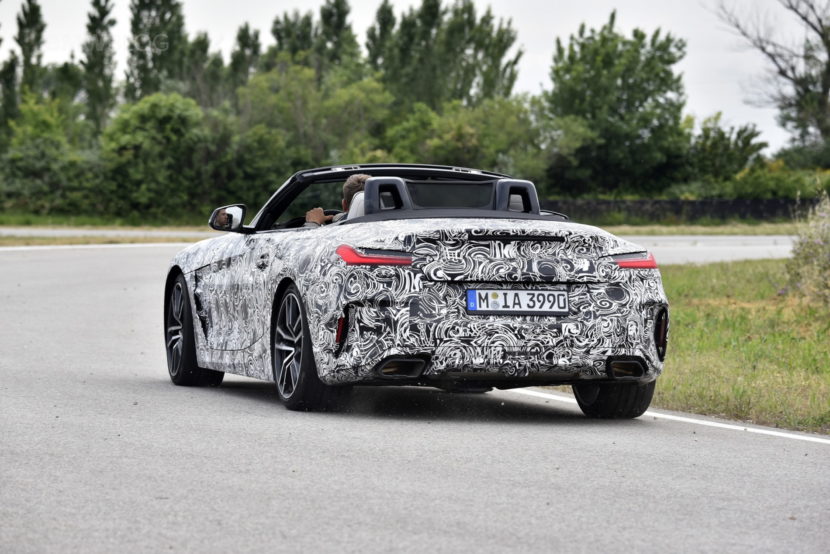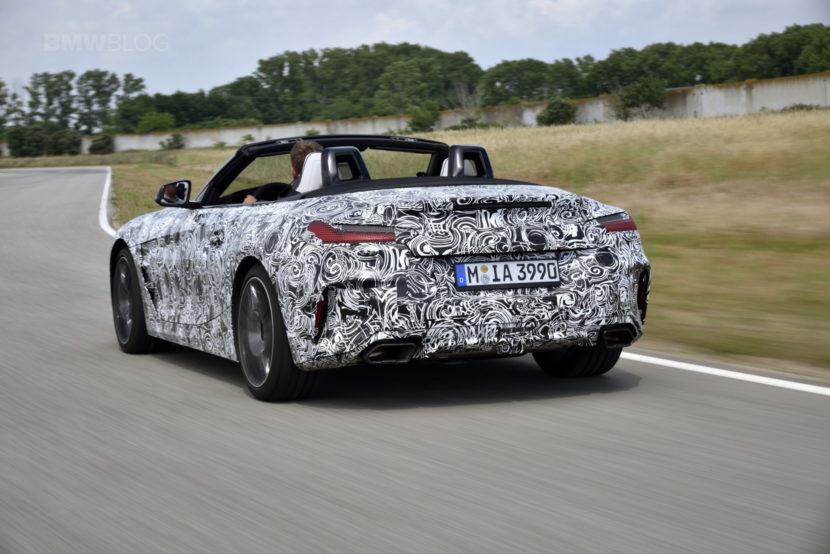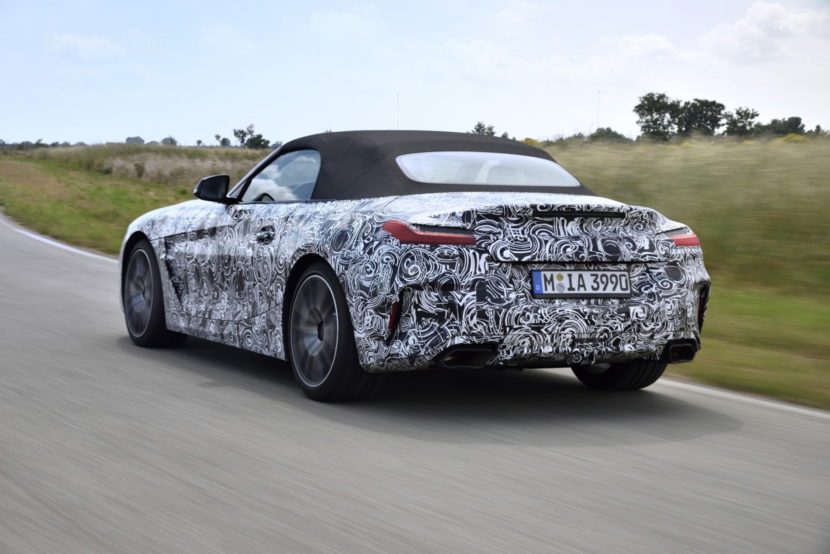You could see from the first prototypes many months ago that work on the new BMW Z4 G29 started with a blank piece of paper. Nonetheless, it’s still quite a surprise to see how intensely the developers responsible have made use of the freedom this gave them. A few days ago, we had the chance to take the wheel of a BMW Z4 M40i prototype on the BMW test track near Miramas, giving us the opportunity to gain an initial impression of the drive response of the third Z4 generation – which at times felt as though the second generation had never existed.
But first things first – after all, even the very first item on the day’s program was interesting: in order to get to know the BMW in-house test circuit in the south of France, we understandably didn’t start right away with one of the virtually priceless BMW Z4 G29 prototypes, but instead we were given a current serial production vehicle. The engineers didn’t opt for just any model here, so they chose one that deliberately set the bar extremely high for the rest of the day – A BMW M2 Coupe which is a benchmark today in terms of driving dynamics and driving fun among the compact sports cars.
The self-assurance reflected in this choice of vehicle could hardly be greater. After all, once thing was certain even before we drove the first few meters in the BMW Z4 G29: with the predecessor generation, it wouldn’t have occurred to anyone to put the journalists in a 1 Series M Coupe as a comparison vehicle. In spite of all its good qualities, the set-up of the E89 Z4 was always geared more towards comfort and when pushed to its limit, it quickly lacked the precision and tightness that both the first Z4 generation E85 and even a 1 Series M Coupe are able to offer.
Yet there were still doubts before the changeover. Of course, the new BMW Z4 G29 was supposed to have taken the criticism of its predecessor to heart and be more of a sports car than a cruise, but would it be as sharp as an M2? And if so: wouldn’t this be more what you’d expect of a potential BMW Z4 M than of the BMW Z4 M40i being showcased here. There was only one way to find out the answer: thickly packaged in camouflage foil, the G29 prototype looked as if it couldn’t wait to show everyone what it is capable of. And our curiosity had been aroused too, of course: would the new Z4 really be able to live up to the promise of enhanced sportiness and even come within reach of the M2?
A first glance at the tires certainly indicates that that this was a serious sports car awaiting to hit the asphalt. The Michelin Pilot Super sports tires were mounted on black 19-inch wheels, 255 millimetres at the front and 275 millimetres at the rear. This is exactly the same setup as the current M3 and M4. So of course, we had to ask about other similarities to the M3 and M4, like the actively controlled mechanical limited-slip differential which helps the M models achieve their impressive traction. And to our surprise, a discreet nod from the engineer gave us the confirmation.
But that’s enough of the theory – let’s move onto the practice. Getting into the car gives you the next indication of the sporty aspirations of the BMW Z4 G29: the roadster’s sports seats could hardly be mounted any lower. The driver sits a few millimetres lower than in the E89, yet still has a better overview. Since the seating position is much more central overall and the bonnet is a few centimetres shorter, the front end of the Z4 can be gauged considerably better than in the predecessor model.
But that’s less important, considering that after all, we were getting the chance to drive on a cordoned-off racetrack, not crawl through city traffic. So, press the start button – incidentally, this is in the centre console to the left of the selector lever as in the recently tested X7 prototypes and no longer on the instrument panel – and listen to the 6-cylinder as it comes to life. The engine in the BMW Z4 M40i is the 360 hp B58 which we’re already familiar with from the BMW X3 M40i: this ought to have a much easier job with the significantly smaller roadster. Before taking any time to think about this, the BMW M2 Pace Car is already setting off in front of us – an unmistakable sign that the fun is just about to start.
The track in Miramas starts with two fast chicanes, where the rigid body of the BMW Z4 gets to show off immediately some of its capabilities. Keeping to the rear of the M2 can only be achieved so effortlessly because the first two laps are taken at a moderate speed for warm-up purposes. Just like the compact athlete in front us of, the roadster has a powerful stance on the asphalt and feels rather under-stretched, while the tires gradually come up to temperature and we approach the finishing straight once again – which is not at all completely straight, but is in fact designed as a slight left bend with a small bump directly prior to the braking point at the end.
In order check out the BMW Z4 M40i thoroughly, a few little buttons on the centre console first have to be used: pressing the Sport button twice puts the M Performance Roadster into Sport Plus mode, but still this doesn’t switch DSC into DTC mode with its increased slip. Unlike before, if you don’t activate the DSC button, DSC remains fully active regardless of the driving mode selected. Insignificant since another button to press won’t hurt us as this stage. The new driving mode also changes the characteristics of the adaptive suspension, while the steering becomes perceptibly tighter too, offering a little more steerability and more precise feedback in return.
The M2 in front of us goes into attack mode, drawing us much more quickly than before through the first chicane, but it is on the subsequent fast bends that things really start to get exciting: the Z4 instantly conveys the necessary trust that all non-professionals absolutely rely on at the wheel of a sports car. The stable traction when accelerating out of tight corners is partly due the active limited-slip differential, but the exceptionally wide track of the new Z4 is an important factor here, too. The G29 roadster is seven centimetres wider than its predecessor, and having increased to a length of 4.32 metres, the now 1.86 metre wide model has virtually the same format as a BMW 5 Series – a Porsche Boxster S is as much as 6 centimetres narrower, and even the chubby cheeks of the M2 are not sufficient to outdo the width of the Z4. This growth is even more dramatic when you consider the track width: an incredible 91 millimetres lie between the E89 and the G29 – making it crystal clear even to the amateur why the car’s driving response has improved so dramatically.
Other features for fun and performance in the Z4 include its very low center of gravity, front axle components mounted with four suspension points as in the M models and the entire Z4-specific suspension kinematics. The result is not just high cornering speeds, but in particular a driving response that comes straight out of the manual for powerful rear-wheel drive cars: neutral and strong on traction, the Z4 builds up a high speed with its balanced weight distribution and, thanks to the spontaneous response of the 6-cylinder engine, can be controlled at all times with the accelerator pedal. The grin on the driver’s face is by no means less broad than in the M2 – and indeed, the engineers assure us that the two vehicles are on a par with each other in terms of lap times.
Compared to the previous BMW Z4, this is a leap in performance which very few fans would seriously have believed in. After our drive on the Miramas circuit we understand why the engineers don’t really regard the new BMW Z4 G29 as a successor to the E89, despite the identical name: the concepts are too distinct, the roadster theme has been interpreted too differently. And those who really liked the current Z4 will certainly need to stay strong: the triple-section metal folding roof now disappears into the history books along with the endlessly long bonnet, the small luggage compartment and the set-up of the driving response. From the perspective of the G29, the properties of the predecessor model are more of a legacy burden to be gladly cast aside – along with 50 kilograms of weight.
As far as customers are concerned, this means that the third generation of the BMW Z4 now goes back to its roots. It is primarily once again an open-top sports car – the times of the powerful but essentially gentle cruiser are over. This at least applies to those drivers who primarily want to take the roadster to its limits on solitary country roads while everyone else will be surprised at the wide gap which the BMW Z4 M40i is able to bridge to the comfort set-up with its adaptive suspension. After all, the BMW M2 without adaptive dampers always has the same set-up, and even the first Z4 generation could sometimes be hard work on poor roads. But in comfort mode, the new Z4 M40i glides with relaxed nonchalance and without exaggerated hardness over bad roads in the area around Miramas.
And this is perhaps the best news for all fans of driving dynamics: up until the market launch in March 2019, the suspension experts under Jos van As still have plenty of time to make the Z4 even faster. For us it was sadly time to say goodbye after just a few laps. We would have loved to have taken the roadster out for longer, because even after just under two hours in the cockpit, one thing is certain: no previous Z4 has even come close to offering the kind of package presented by the new BMW Z4 M40i. In addition to the excellent driving dynamics of the first generation, the G29 Z4 also offers the comfort that the first generation lacked and which the second generation perhaps had too much of.
The result is a purebred sports car that would appear to justify a very bright look ahead to the 2019 roadster season.



